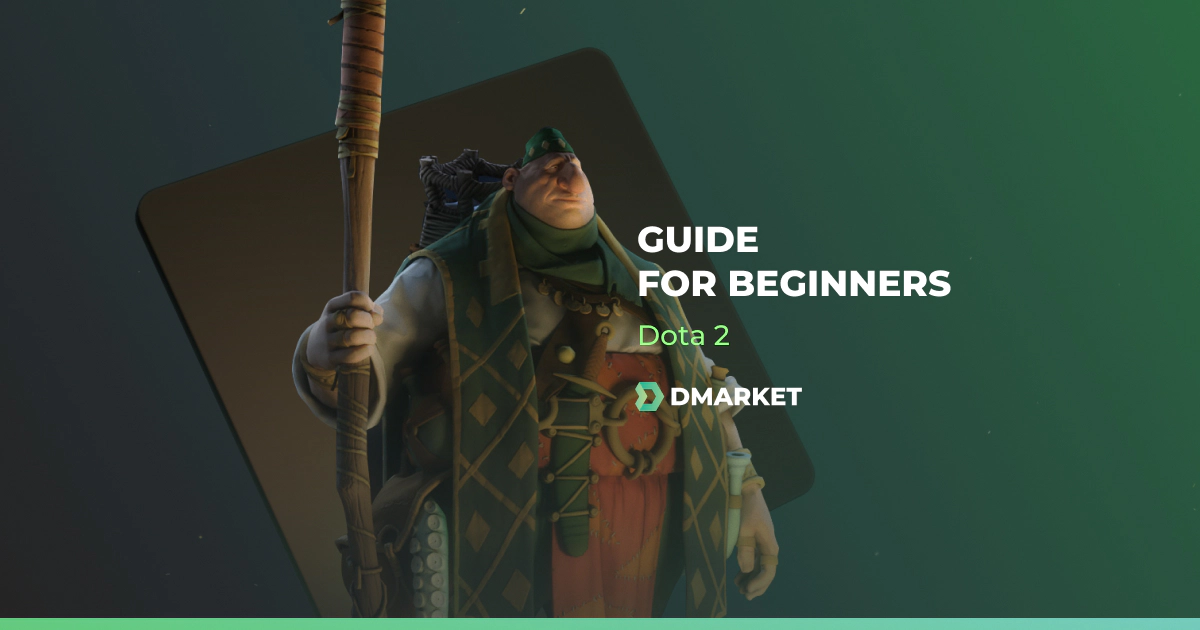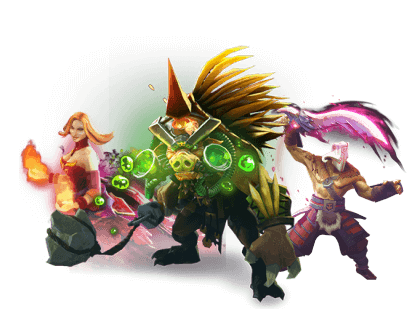Dota 2 Guide for Beginners | How to Play Dota
- Dota 2 Basics
- Controls in Dota 2
- Glossary
- Map
- Heroes
- Status Effect
- Talents
- Game Stages
- Damage and Defense Mechanics
- Matchmaking Rating
- Tips and Tricks
Young Paladin, we deem you ready to be introduced to the mighty force that pulls and pushes the tides of today’s gaming community.
What Is Dota 2
Dota 2 is a world-famous online MOBA played by millions of people across the globe. The title was formally announced in October 2010, and released as a free-to-play game three years later.
The game is based on an enormously popular Warcraft 3 mod, the Defense of the Ancients (hence the name DotA). Two years after its release, the game had a million concurrent players, become its own eSports discipline with their DotA Heroes and firmly established itself as a legend in the gaming world. Seriously, you can love or hate Dota, but you can’t deny its influence on the industry.
Dota 2 Basics
How to Play Dota 2?
You’ll have to spend thousands of hours of gameplay to learn all the secrets of the game, and writing them down will take at least two volumes. But we all have to start somewhere, right? So, welcome to the realm of Dota 2 (Defense of the Ancients 2) — your point of no return.
Dota 2 Basic Tutorial and Mechanics
In short, Dota 2 is a real-time strategy with elements of a role playing game with the main aim of destroying opponents’ Ancient positioned in the left of their stronghold.
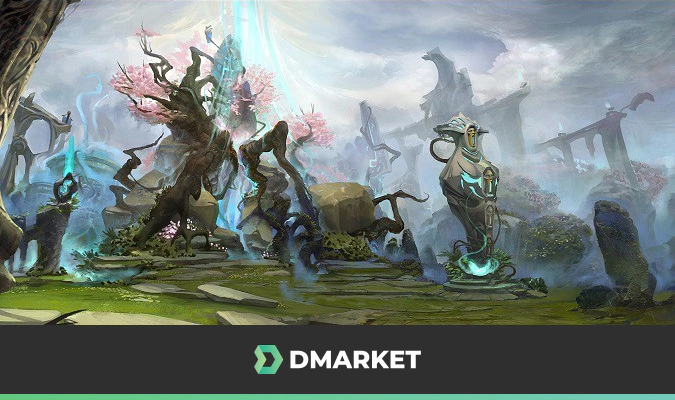 The stronghold is protected by three rows of towers down three lanes – top, middle and bottom. In-game roles are distributed mostly depending on the position on a lane that suits a hero. Instead of relying on a massive army, you are controlling a mighty Hero with unique Skills, Stats and set of Items.
The stronghold is protected by three rows of towers down three lanes – top, middle and bottom. In-game roles are distributed mostly depending on the position on a lane that suits a hero. Instead of relying on a massive army, you are controlling a mighty Hero with unique Skills, Stats and set of Items.
Each player picks one hero in the lobby, trying to match their teammates in the way their champion can create synergy.
When you kill creeps or rival heroes, you earn experience, increasing your level and upgrading your abilities. Each hero also has six item slots to stack at one of the shops.
Item functions range from increasing existing stats, to granting new passive abilities (e.g. vampire) to mana and health regeneration. To purchase items, you need to earn a certain amount of gold by either waiting as it is earned passively, killing creeps, heroes or destroying enemy buildings. Check out out advanced guide on how to play Dota 2
Dota 2 Controls Tips
You will be using both your keyboard and mouse to play. Here is the list of the main controls to utilize in your epic fights:
Right clicking on the ground orders your hero to move there.
Right clicking on an enemy creature or structure orders your hero to attack them with their auto-attack.
Alt + left clicking for communication:
- On the ground – a sound will play and show an exclamation mark on your allies’ minimap, forcing them to pay attention
- On towers – indicates that an attack or defense of tower is needed
- On a rune or an item – shows that a rune/item is ready and or will soon appear on the respawn site
Alt + Ctrl + left-clicking on the map will show an X sign on your allies’ minimap, generally pointing out a dangerous situation.
Right clicking on an item results in purchasing it, if you have enough gold and are currently at a shop location. If one of these conditions isn’t met, nothing will occur.
Left clicking on an element displays all related items. As an item is often a component of a more complicated piece, the items used in its creation will be displayed underneath, while the items that can be created using this part will be indicated above.
Q, W, E and R keys on your keyboard are used for your hero abilities. As some heroes have up to 6 abilities from the start, or additional abilities occur after purchasing certain items, the default key set can look like this: Q, W, E, D, F and R for the ultimate ability.
Note! These are just basic settings used by most gamers, but they are not mandatory. Remember that you can customize the controls for your own convenience in the Game Settings.
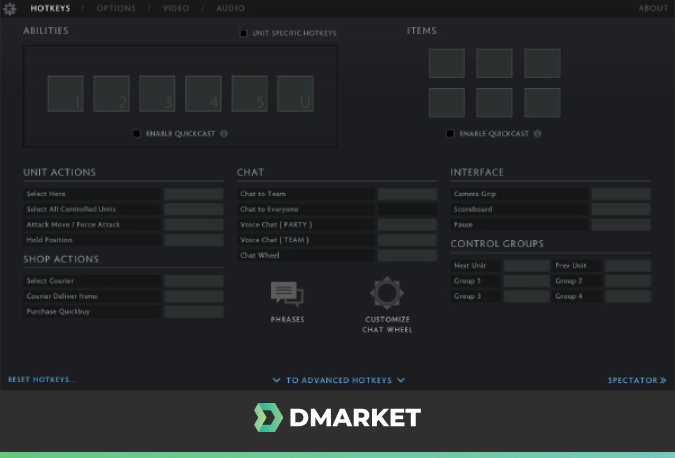
Dota 2 Terminology
The Dota 2 world is immense. So, trying to learn whole Dota 2 which includes all the names and terms used without actually playing it will be to no avail. But to play, you have to know at least something, so you won’t ask your teammates a dozen times per a match “What does that mean?”
We’ve collected crucial Dota 2 notions you have to learn before you start:
Ancients (buildings) – the first meaning of the term signifies two large structures at the heart of your and your enemy’s base. You need to protect yours and destroy the opposing structure.
Ancients (creeps) – these are special types of neutral units (creeps). They are located at special sites on the map, two on your side, and two on the enemy side. However, you can attack them both on your side and on the opposing one. When you attack and defeat them, you gain more gold and experience compared to standard creeps.
Bot (Lane) is the lane that leads to the bottom right corner of the map. Unlike easy and hard lanes, which switch positions depending on the side you play for, bottom line stays the same. For Dire, the bot line leads directly to their base. For Radiant, it extends a little further, covering the corner of the map as well.
Creeps – neutral non-playable units that spawn once in a while on your and enemy base. Then they travel down the three lanes and attack enemy units. If you appear to be near enemy creeps when they die, you earn experience.
If you deliver the last blow that kills them, you earn gold.There are also jungle creeps that spawn at specific places called camps at regular intervals. They are also used to earn experience and money.
Specific creeps, such as the Ancients mentioned earlier, and Roshan, are scattered across the map and can be utilized to gain an upper hand in the game.
CS or the Creep Score is the amount of last creeps you have killed (delivered last hits to).
Denies is a specific tactic mostly unique to the universe Dota 2. It stands for killing your own creeps, or even heroes, on low health points in order to deny enemies (hence the name) experience and gold. This tactic is rather advanced, so don’t run around killing your allies during your first games.
Dire is name of the side situated on the top right corner of the map.
Drafting stands for the part of the game before the actual match begins. In this section you are picking heroes. In some types of matches, you can also ban heroes you don’t want to play against. This is a must at professional tournaments.
A lot of mind games are happening there, as players are trying to figure out their opponents’ strategy without giving away their own. However, at All Pick games without the ban function participants mostly choose heroes they like playing with.
Farm (Farming) is earning gold and experience by killing creeps.
Ganking stands for gang killing. A couple of players from one team will coordinate and ambush an enemy hero and earn a kill, thus making the enemy team weaker.
Hard Lane is the shorter lane in the game. If you are playing for Dire, it’s the bottom lane, and if you are a Radiant – it’s the top one. This line is more demanding in terms of hero pick and players skills. The area protected by your towers doesn’t extend past the river, but the point where your neutral units meet the enemy creeps does.
This means you have to be extra vigilant and watch enemy heroes closely. Also you need to pick a durable hero with low gold-dependency and excellent escape abilities to play on this lane.
The Dota 2 Jungle is the forest between the lanes. Some heroes are great at killing neutral creeps placed there, so they are called the junglers.
Last hit is the final blow you deliver to a creep, which earns you extra gold. As some heroes are more dependent on the amount of gold they have than the others, you need to carefully watch the amount of last hits you deliver. If you are support (go to Hero Roles to learn more), it’s better to allow your carry to pick most LHs.
Micro is short for microcontrol or micromanagement, which refers to a player’s ability to control several units at the same time. Some heroes or abilities require this skill.
Mid (lane) is the central lane on the map, where creeps meet directly in the middle of the river.
Pull (pulling) is a tactic of attracting a unit’s attention in order to drag them from their usual path. For example, you can pull jungle creeps, so they attack the lane creeps. This is used to move the point at which creeps meet your tower, thus making it safer for you to farm.
Radiant is the name of the side placed at the bottom left corner on the map.
Roshan is the strongest neutral creep situated at the river between Dire and Radiant. Killing him grants an item called Aegis of the Immortal, which gives the bearer an ability to come back one time without waiting for a respawn.
Safe Lane (or Short lane) is the top lane if you are Radiant, and bottom lane if you are Dire. Here the protective towers are situated near the meeting point of the creep lanes, which makes it safer for a hero to farm and assault enemy heroes.
Stacking is aimed at piling up several groups of creeps to either farm more or assault an enemy hero or tower. To do so, you need to attack creeps on a site and run away, pulling them with you. If the timing is correct, a new stack will respawn while creeps are following you. Then you need to repeat this as many times as you need.
Top (lane) is the lane which leads to the top left corner of the map. Dire top lane is their Hard Lane, as it’s longer. Radiant top lane is the Easy Lane.
Towers are defensive structures placed along the lanes. They grant you vision of the surrounding area and a place from where to attack enemy heroes and creeps. Each side has a total of 11 towers.
Wards are items you place on the map to provide vision of the area. They are usually placed near runes, key creeps like Roshan, and near the enemy side to keep track of their movement and alert your allies in time.
Do you still want to play Dota? If you are still excited to proceed, let’s move to the Map description.
Map
The map is the battlefield of Dota 2. It is comprised of two sides:
- The Radiant fraction, situated at the bottom left corner;
- The Dire fraction, positioned at the top right corner
The fractions are divided by a river.
An Ancient is situated at the core of each side (the furthest left or right corner respectively).
Jungle fills the space in-between the Ancients. The map is represented by a minimap in your gaming interface during the match.

Dota 2 Lanes
The map is segmented into three different lanes – top, middle (or mid) and bottom (bot). Each lane leads to the enemy base, but they are guarded by towers at both sides.
Top lane is the one that leads from the base (either Radiant or Dire) to the top left corner of the map. For Radiant, this is the hard lane (see the definition of the hard lane or offlane at the Glossary section of the Introduction part). For Dire, consequently, this is the easy lane.

- Mid lane stretches diagonally across the map, and the creep waves clash right in the river.
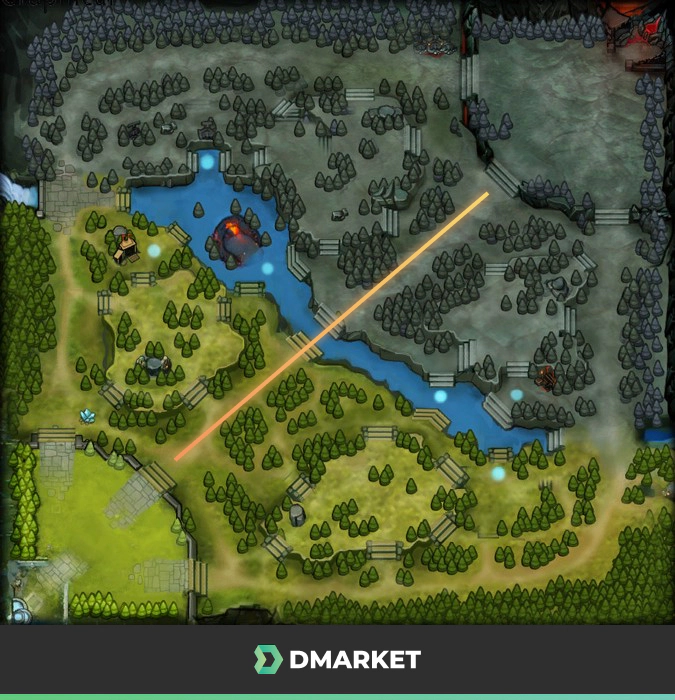
- Bot lane connects the base of each team and the bottom right corner of the map. In reverse, bot is the easy lane for Radiant, and hard lane for Dire.
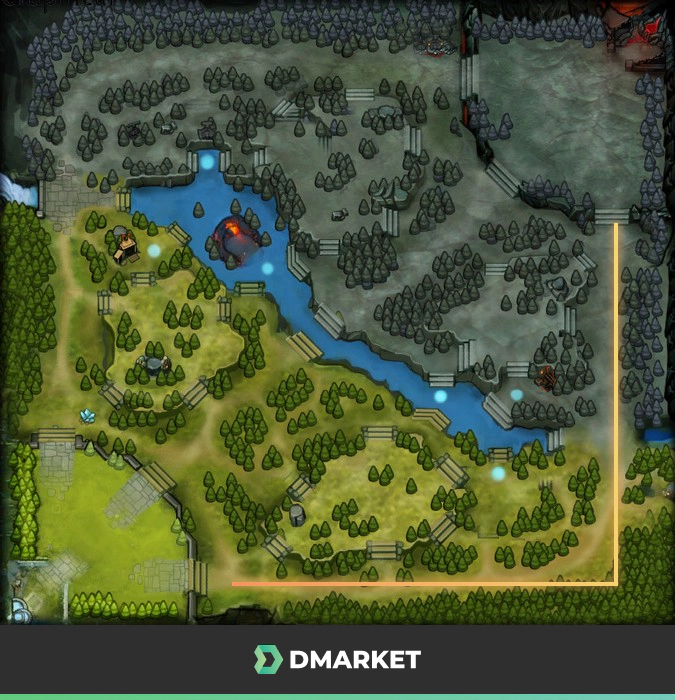
It’s crucial to stick to your line during the first stage of the game – lining – since the amount of gold and experience you will earn can determine your success during the later stages, when it’s time to roam around the map and ambush enemies.
Jungle in Dota
A large area of the map is covered with trees, forming the Jungle. It is filled with neutral creeps, ranging from ordinary ones to Ancient units. Staying away from the lanes and farming in the Jungle instead is called jungling.
Heroes that work best in this area, meaning that jungle creeps are enough for them to farm, and they are great at helping their buddies to ambush enemies. Creeps in the Jungle spawn at 01:00, compared to line creeps, which appear right at the start.
 As every part of Dota’s Jungle map, the River has a lot of essential parts of the game to offer. It divides the map into two fractions. The river is surrounded by high ground from both sides, blocking the vision to the opponents’ side. Roshan, the mightiest creep on the map, is situated in a pit on the river closer to the Dire side.
As every part of Dota’s Jungle map, the River has a lot of essential parts of the game to offer. It divides the map into two fractions. The river is surrounded by high ground from both sides, blocking the vision to the opponents’ side. Roshan, the mightiest creep on the map, is situated in a pit on the river closer to the Dire side.
Also, the river offers you Runes. Let’s talk about them.
Runes in Dota 2
Runes are fancy-looking power-ups that spawn in regular time intervals in six spots on the game map. There are two types of runes – Bounty Rune and Power-Up Rune. Bounty rune gives your team gold, while power-up grants special abilities for a limited amount of time.
 There are four bounty runes on the map, two on each side of the playable area divided by the river. They spawn at the very beginning of the game, and will respawn in five minutes at different places after being picked up.
There are four bounty runes on the map, two on each side of the playable area divided by the river. They spawn at the very beginning of the game, and will respawn in five minutes at different places after being picked up.
Bounty runes grant initial bonus gold plus extra gold per minute. The amount of money received is frequently changed by Dota updates, so keep an eye on them.
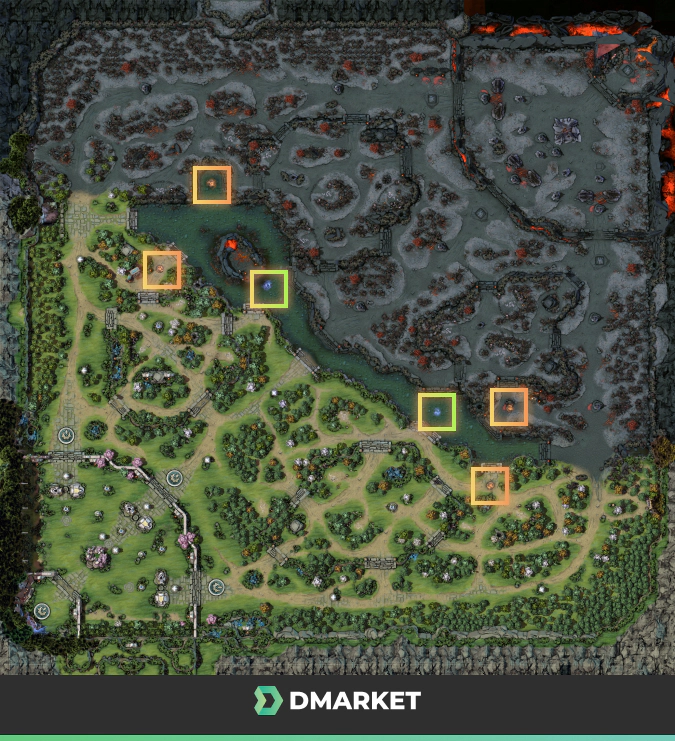 Power-up runes have two spawn locations at the map on the river, between the top and mid, and bottom and mid. Unlike bounty runes, there’s only one power-up at a time that spawns randomly at the one of the available locations. When picked up, it will reappear in two minutes.
Power-up runes have two spawn locations at the map on the river, between the top and mid, and bottom and mid. Unlike bounty runes, there’s only one power-up at a time that spawns randomly at the one of the available locations. When picked up, it will reappear in two minutes.
There are six following types of abilities these runes grant:
- Double Damage Rune grants 100% bonus of a hero’s damage. Its effect lasts for 45 seconds.
- Illusion Rune creates two illusions of a hero. The duration is 75 seconds.
- Invisibility Rune gives an ability to become invisible. The effect lasts 45 seconds.
- Regeneration Rune fully restores mana and health unless the hero takes damage from another hero. It affects you for 30 seconds.
- Haste Rune gives you immunity to slows and grants maximum movement speed. The power-up lasts for 22 seconds.
- Arcane Rune reduces all spell cool downs by 30% and mana cost by 40%. The duration is 50 seconds.
Dota 2 Creeps (Spawn Time, Stacking Time, and More)
We bet you have heard a lot about creeps from your friends who play Dota. It’s time to figure out which creature can be called a creep.
Saying that tiny creatures you see running from your base and clashing against enemies or towers are creeps isn’t quite correct. This definition is way broader and includes the biggest forest creeps, and even Roshan. Here are the types of units you will encounter:
Line creeps
These are the basic creeps that move down the three lanes to the nearest enemy tower, hero or unit and start attacking it. They are automatically respawned at the Barracks on your base. The spawn time of creeps is every 30 seconds (creep waves).
Killing enemy creeps is crucial for gaining gold and experience. You will get experience just by standing in a small area where a creep is killed, but if you deliver the last hit, you will get more XP points and gold.
You will also have to learn how to deny enemies last hitting your creeps to reduce the XP bonus they get. With time passing, creeps become more powerful.
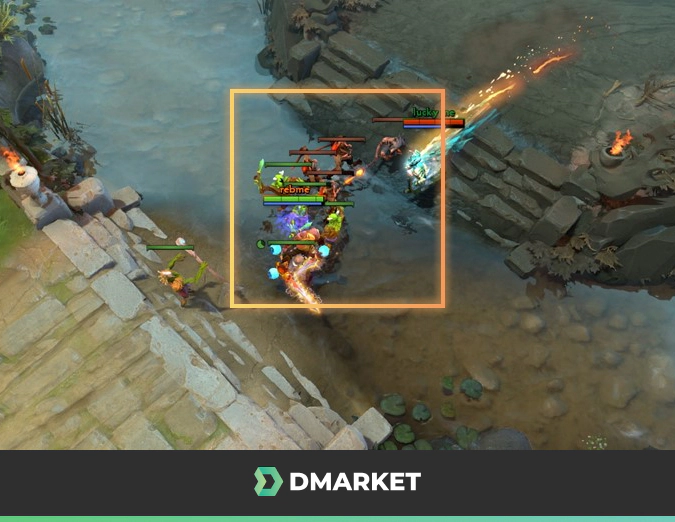
There are three main types of line creeps:
- Melee
- Ranged
- Siege
Melee creeps are the most numerous group of your tiny warriors. They have more health and less attack damage compared to other creeps.
Ranges ones can attack from distance, hence the name, deal more damage, but have less health.
Siege creeps are massive moving machines, compared to other lane units. They have the highest health among the three units, and, unlike other creeps, high magic resistance. They also prioritize buildings over enemy creeps and heroes when attacking.
Unlike heroes, creeps don’t gain experience and level-up after killing enemies or destroying buildings. They have fixed stats as opposed to heroes. However, every 7 minutes and 30 seconds they gain an upgrade to their health and attack damage, and also an increased gold bounty.
Also these stats can be buffed by destroying Barracks (read more in the Buildings section). Doing so will grant your team with either Super Creeps or Mega Creeps, which deal more damage and give less bounty to the opponent when killed.
For the first 15 waves (up to 7:00), the creeps on Radiant’s bottom lane and Dire’s top lane have their movement speed boosted by 30%, moving at a speed of 422.5. On the Radiant side, the boost lasts for 16 seconds, effectively lasting until two thirds of the way from the tier 2 tower to the tier 1 tower.
On the Dire side, the boost lasts for 8 seconds, effectively lasting until reaching the tier 2 tower. At the same time, Radiant’s top lane and Dire’s bottom lane are slowed by 35%, moving at a speed of 211.25. On the Radiant side, this slow down lasts for 8 seconds, effectively lasting until reaching the Radiant symbol on the ground between the two ramps.
On the Dire side, the slow lasts for 22 seconds, effectively lasting until halfway between reaching the tier 1 tower from tier 2 tower. The 16th and following waves (7:30 and onwards) move unboosted and unslowed at a speed of 325. The middle lane always moves at 325 speed.
Every 7 minutes 30 seconds, melee and ranged creeps gain a permanent upgrade to their health and attack damage, as well as an increase to their gold bounty. The following bonuses are applied:
- Melee creeps: +12 health, +1 attack damage, +1 gold bounty
- Super melee creeps: +19 health, +2 attack damage, +1 gold bounty
- Ranged creeps: +12 health, +2 attack damage, +1 gold bounty
- Super ranged creeps: +18 health, +3 attack damage, +1 gold bounty
- Siege creeps: +1 gold bounty
- Mega creeps: +1 gold bounty
These health and damage upgrades are applied a maximum of 30 times, while the gold bounty upgrade has no limit. This means their health and damage are fully upgraded at 225:00 in-game time, which is 3 hours and 45 minutes. The total values on each upgrade cycle can be seen in the following table.
Siege creeps only gain one upgrade, and that is +16 damage upon destroying their respective lane’s ranged barracks.
Mega creeps do not grow stronger, but have their bounties increased over time.
Neutral (jungle) creeps
Not all creeps in a game have a side. There are also some creatures that would like to abstain from the never-ending battle for the ancients, however, we, players, still manage to drag the poor creatures into it.
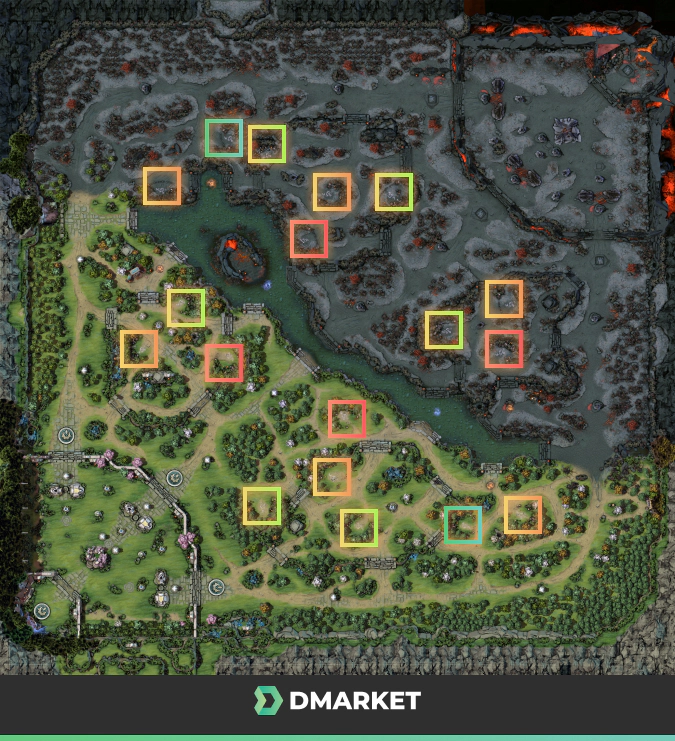 When talking about neutral creeps, most people think about the smaller creatures in the forest. However, all the units you find in the forest, even Roshan, are neutral creeps. Let’s look at them in more detail.
When talking about neutral creeps, most people think about the smaller creatures in the forest. However, all the units you find in the forest, even Roshan, are neutral creeps. Let’s look at them in more detail.
There are a total of 9 neutral creep camps on each side of the map scattered across the forest. They are more profitable in terms of experience and gold, that is why a hero on the role of the jungler can stay away from the lanes and still get a decent level and items.
Like line creeps, neutral creeps gain more attack power as the game progresses, jungle units become costlier when killed and grant more experience.
Jungle creeps often act as a subject of most creep-related strategies, such as pulling and stacking mentioned above, and a lot of other tactics we’ll talk about later. In other words, to play a successful match, you have to engage with forest creeps A LOT.
Each side has four creep types to utilize:
Small camps
There is only one small creep camp on each side of the map. Its units have the lowest damage and health levels, but also give little bounty. It’s safe to attack them by any hero nearly at any point in the game. Junglers often start farming from these camps.
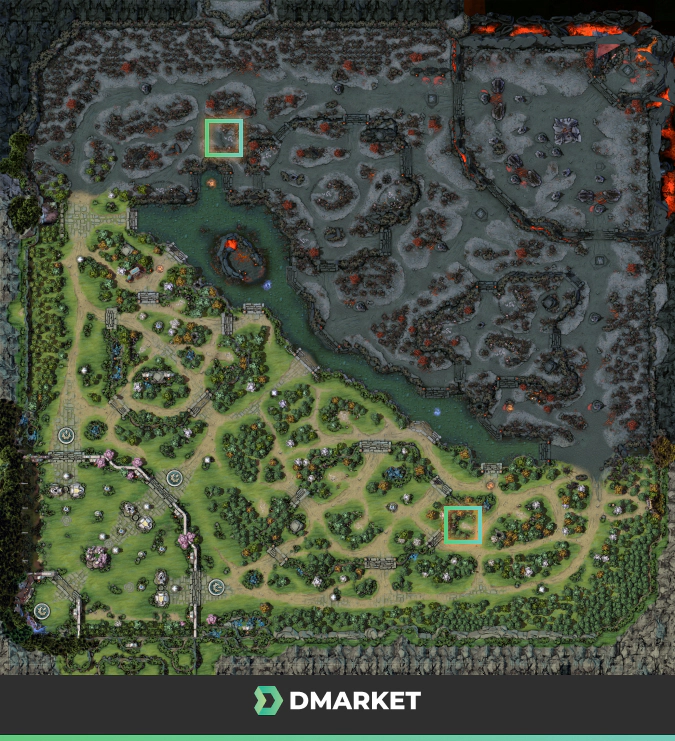 There are six different types of small camps – Kobold, Hill Troll, Vhoul, Ghost and Harpy camps. The sixth one is comprised of kobolds and hill trolls. Except from the kobold camp, which consists of five units, small camps have three creatures.
There are six different types of small camps – Kobold, Hill Troll, Vhoul, Ghost and Harpy camps. The sixth one is comprised of kobolds and hill trolls. Except from the kobold camp, which consists of five units, small camps have three creatures.
Medium camps
Obviously, these camps are a little stronger than the small ones, and give you more gold and experience. There are three camps of this type on each side of the map. While some creatures can be defeated early in the game, others can be too powerful to mess with.
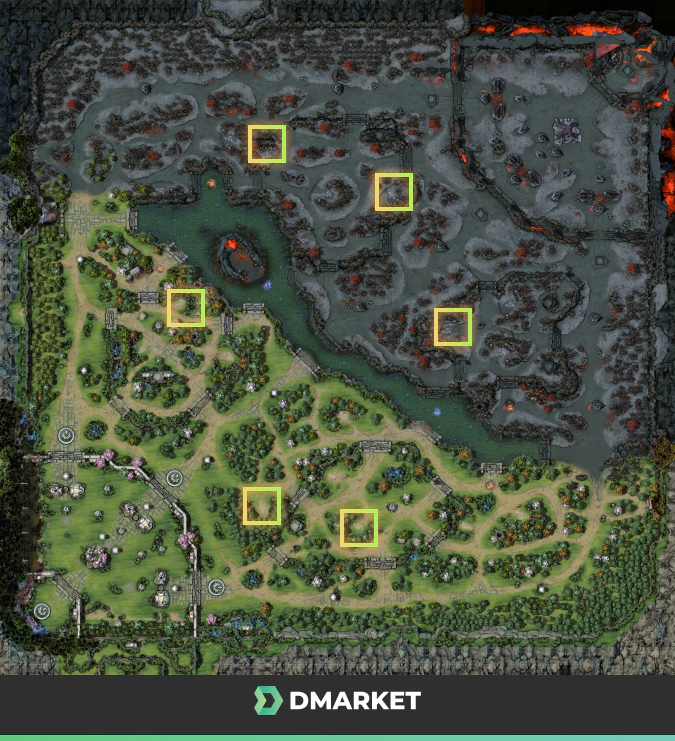 There are five types of medium camp creatures: Centaurs and Golems (two creatures each), Wolfs and Ogres camps (three creatures) and Satyr Camp of four creatures.
There are five types of medium camp creatures: Centaurs and Golems (two creatures each), Wolfs and Ogres camps (three creatures) and Satyr Camp of four creatures.
Large creeps
These creep camps are the strongest among regular units. They give you maximum gold bounty, which is equal to the bounty line of a creep wave. However, they possess advanced skills, and thus are difficult to deal with early in the game. There are also three large camps on each side of the map.
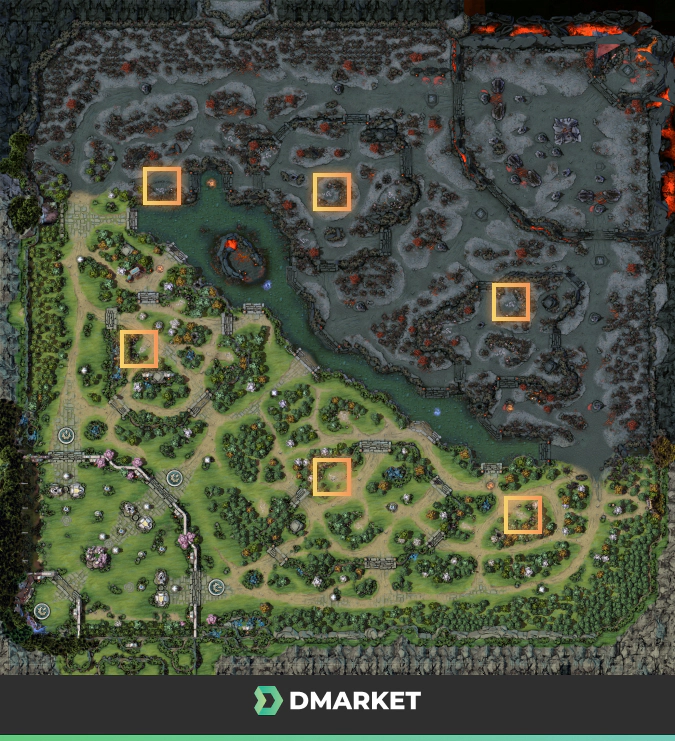 You and your allies will be able to confront the following types of creatures: Large Centaurs, Large Satyrs, Hellbears, Wildings and Trolls. Apart from the Hellbear camp, which consists of only two units, all other camps include three monsters.
You and your allies will be able to confront the following types of creatures: Large Centaurs, Large Satyrs, Hellbears, Wildings and Trolls. Apart from the Hellbear camp, which consists of only two units, all other camps include three monsters.
Ancient creeps
These are the most powerful creeps you will encounter in the game. They are comprised of special units with distinct abilities, that is why they are called Ancients. For example, creatures from these camps have high resistance to most spells, and the conversion spell in particular. There are two camps of ancient creeps on each side of the river in the jungle.
No wonder only a couple of heroes can take control of these mighty creatures, or else the opposing team would be fighting against a huge imbalance.
 Ancient creeps have very high health, deal massive damage and have strong auras. That is why they are impossible to deal with early in the game, and still remain very challenging for most players even late in the game. There are four different types of ancient camps, all consisting of three units: Dragons, Large Golems, Thunderhides and Prowlers.
Ancient creeps have very high health, deal massive damage and have strong auras. That is why they are impossible to deal with early in the game, and still remain very challenging for most players even late in the game. There are four different types of ancient camps, all consisting of three units: Dragons, Large Golems, Thunderhides and Prowlers.
It’s best to launch an attack if you are a carry hero with splash damage (the ability that deals damage to enemies in a small area near the attacked target). Also, make sure to be cautious near the camp early in the game.
If you happen to have lower than 50% health and accidentally triggered an Ancient camp, you can get in serious trouble. Especially if the camp consists of creatures that have Root abilities, because being pinned to the ground even for a few seconds can be a death sentence in the early stages of the match.
Roshan
This creep technically belongs to ancient creeps, but since he is the most powerful neutral unit in the game he has his own category. There is only one Roshan camp, situated to the left corner in the river, a little bit closer to the Dire side.
 Very few heroes are able to take this monster down during mid or late game, not to mention early game. Often attacking Roshan is a strategic decision where every team member takes part. Usually the assault happens during safe times, when most of the enemy team is on the cool down after a successful gang fight.
Very few heroes are able to take this monster down during mid or late game, not to mention early game. Often attacking Roshan is a strategic decision where every team member takes part. Usually the assault happens during safe times, when most of the enemy team is on the cool down after a successful gang fight.
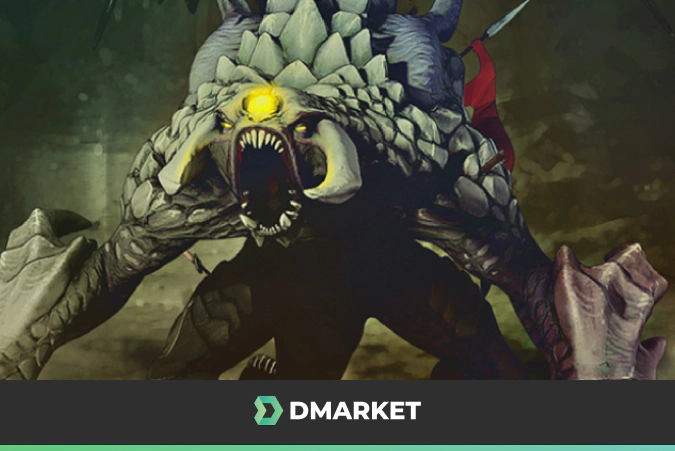 Apart from giving you a lot of money and experience, Roshan also drops Aegis of the Immortal – a special item you can only acquire by killing this creep that allows you to respawn at the exact same spot where you were killed after 5 seconds with full health.
Apart from giving you a lot of money and experience, Roshan also drops Aegis of the Immortal – a special item you can only acquire by killing this creep that allows you to respawn at the exact same spot where you were killed after 5 seconds with full health.
NOTE! Don’t forget to control Roshan respawn time, which is a random time between 8–11 minutes
If you kill Roshan a second time, the monster will drop both the Aegis and a piece of Cheese. And the third time grants you Aegis, Cheese and Refresher Shard. All subsequent times you will get the three items with no other additions, but this occurs very rarely.
Summons and creep-heroes (Creeps you summon)
Dota specialists (yes, that is a thing now) are still arguing about whether summonable creatures should be considered creeps or not. You do not typically encounter these creatures unless you play against a hero with an ability to call in for them.
 While summons appear under the control of the hero that casted the spell, they can be converted by enemy heroes into their possession. Only a small number of this type of creeps can’t be controlled by other than the summoner. They also appear for a limited amount of time, and are limited in numbers.
While summons appear under the control of the hero that casted the spell, they can be converted by enemy heroes into their possession. Only a small number of this type of creeps can’t be controlled by other than the summoner. They also appear for a limited amount of time, and are limited in numbers.
Only a small part of summons follow a hero around until they are killed.
All summonable creatures can be divided into three major groups:
- Regular summons
- Creep-heroes
- Wards
Regular summons are no different from line creeps considering their stats. When people say summonable creeps, they usually refer to this type of creatures. Regulars often have only passive abilities, lower health and don’t give a lot of bounty to an enemy when killed.
They also can be resummoned after a rather short time period.
Creep-heroes are treated by most spells like other Dota 2 heroes, they are significantly stronger and often act as a main weapon to a summoner hero. However, they usually have a high bounty and long cooldown, so it’s better to keep this creature alive as long as possible.
 We are not sure whether wards can be called creatures, yet they are definitely summons, so we decided to mention them anyway. These are usually small immobile items used for various purposes, such as attack, defense, aura and map vision. Wards are often immune to most spells and abilities. Some spells can go directly through a ward without affecting it in any way.
We are not sure whether wards can be called creatures, yet they are definitely summons, so we decided to mention them anyway. These are usually small immobile items used for various purposes, such as attack, defense, aura and map vision. Wards are often immune to most spells and abilities. Some spells can go directly through a ward without affecting it in any way.
Buildings
Technically, everything in Dota revolves around buildings. You need to protect your Ancient, you are guarded by set of towers, and you launch an assault on the enemies’ Ancient, and so do they. There are also a couple of other structures we mentioned briefly before, and it’s time to study them with the precision they deserve.
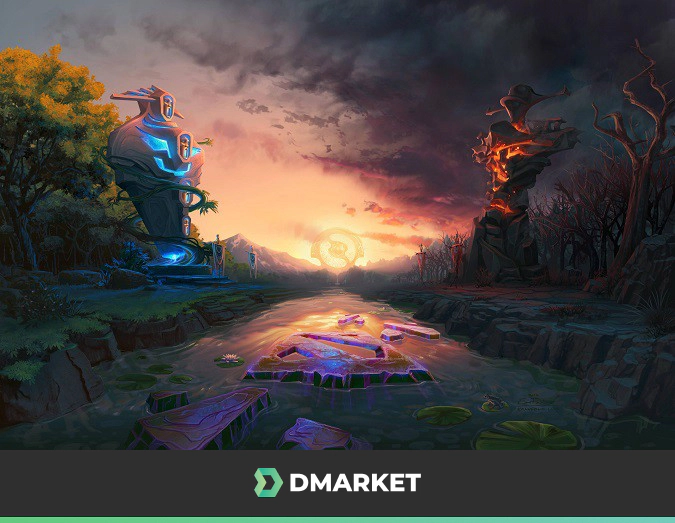 Buildings are not controlled by players. They have a set of predetermined actions for every battle situation.
Buildings are not controlled by players. They have a set of predetermined actions for every battle situation.
There are 29 buildings on each side. (Don’t worry, this total count includes repetitive ones, so you don’t have to memorize 29 separate types). Each side has the same set of buildings, with the only thing being different is their appearance. Let’s dive into the details, starting from the building the closest to your base and moving forward.
Buildings are immune to most spells, deal siege damage and grant gold to either the entire team or whoever made the last hit when destroyed. They don’t however, grant any experience. Like creeps, buildings can be denied to prevent the enemy from getting all the gold.
Buildings don’t respawn – once your tower or barracks are destroyed, they are lost forever.
Fountain
A fountain is the first building you encounter in Dota, along with the Base shop, which we will describe later. This building is located right at the respawn spot, and its objective is to restore your mana and health quickly. The ability giving you 5% health points and 6% mana per second is called Rejuvenation Aura. There is one fountain for each side.
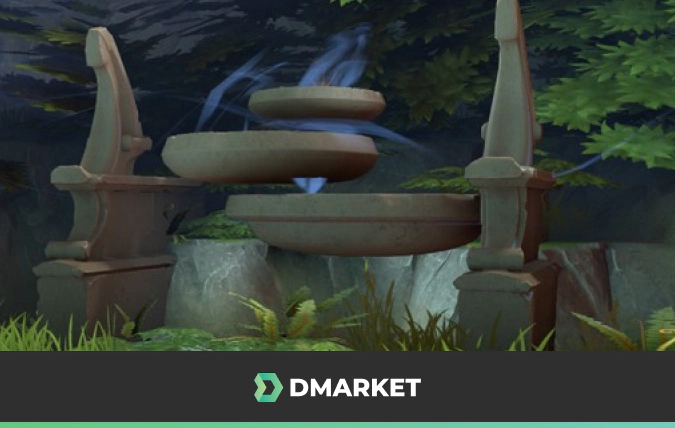
The second main function towers perform is base defense – they deliver heavy and rapid shots to an enemy intruder. They attack priority is heroes before minions. Fountains are invulnerable, meaning you can never destroy one, and even if you could, you wouldn’t even live long enough to do so due to their high damage.
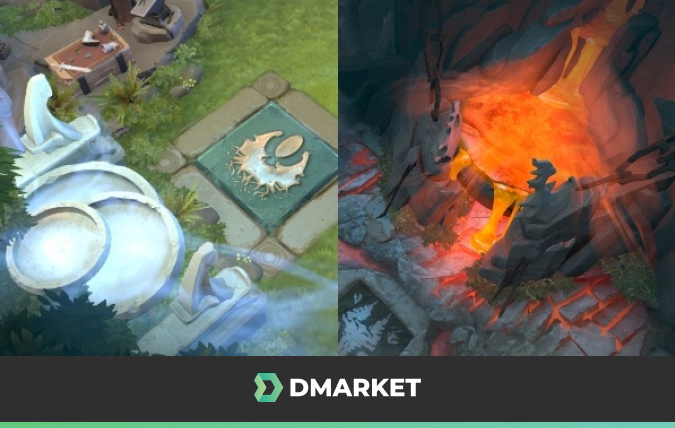 As most other buildings in Dota 2, Fountains have True Sight – the ability that helps them detect enemy heroes, even if they are utilizing invisibility. However, there are some exceptions. This ability doesn’t work for Slark’s Shadow Dance skill, Smoke of Deceit item and Techies’ traps and mines within the range of Minefield Sign, upgraded by Aghanim’s Scepter.
As most other buildings in Dota 2, Fountains have True Sight – the ability that helps them detect enemy heroes, even if they are utilizing invisibility. However, there are some exceptions. This ability doesn’t work for Slark’s Shadow Dance skill, Smoke of Deceit item and Techies’ traps and mines within the range of Minefield Sign, upgraded by Aghanim’s Scepter.
Ancient
This is the heart of your base, the most important building you have to protect. Sometimes they are referred to as Thrones or Trees for the Radiant’s side and Throne for the Dire side because of their appearance.
In order to win, your team has to destroy the opposing team’s Ancient and keep yours alive. Each team has one Ancient, guarded by two tier 4 Towers. You can’t damage this structure unless you’ve destroyed the opponents’ towers.
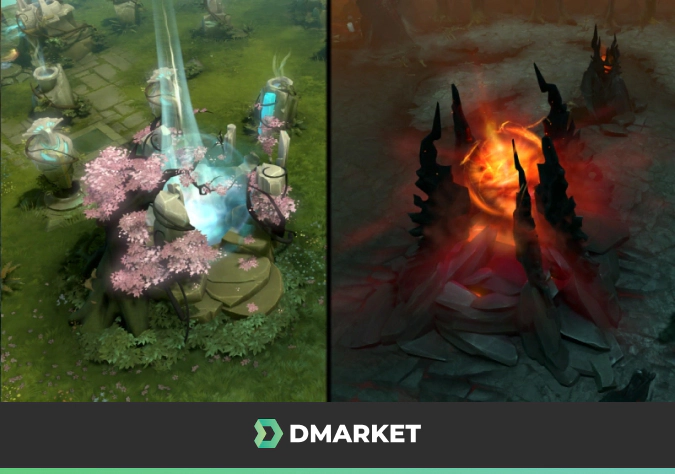 As with most other buildings, Ancient has Backdoor Protection ability and True Sight.
As with most other buildings, Ancient has Backdoor Protection ability and True Sight.
Backdoor Protection won’t allow a hero deal damage to the building unless it’s been attacked by their creeps first.
This was introduced after many players abused the invisible ability and sneaked up upon the opponents’ Ancient while they were fighting somewhere else. This way one hero destroyed the core building even without giving a chance to the attacked team to defend themselves.
Now, unless you are attacking with your creeps, Backdoor Protection gives the building increased health regeneration and incredible attack power, making it nearly impossible to destroy.
Towers
Alongside with the Ancient, Towers are the iconic Dota 2 buildings that most newbies are aware of. However, to lead a successful assault, you need to know more about this main line of defense in Dota.
 Each faction has a set of 11 towers – 9 aligned along the roads leading to the river, and two protecting the Ancient.
Each faction has a set of 11 towers – 9 aligned along the roads leading to the river, and two protecting the Ancient.
For convenience and faster communication, towers are grouped in Tiers:
- Tier 1 includes the first three towers, which are closest to the river. Subsequently, they are divided into tier 1 top, mid and bot towers. These are the only towers that don’t have Backdoor Protection.
- Tier 2 towers are located midway through the line.
- Tier 3 towers form the last protection line before the enemies enter your base.
- Tier 4 are last two towers defending the Ancient. Unless both of them are destroyed, you can’t deal damage to the Ancient.
Tier 1 towers are invulnerable only during the preparations stage. Tier 2 and 3 remain invulnerable unless the preceding structure on the corresponding line is destroyed. To be able to deal damage to Tier 4 towers, you need to destroy at least one Tier 3 tower.
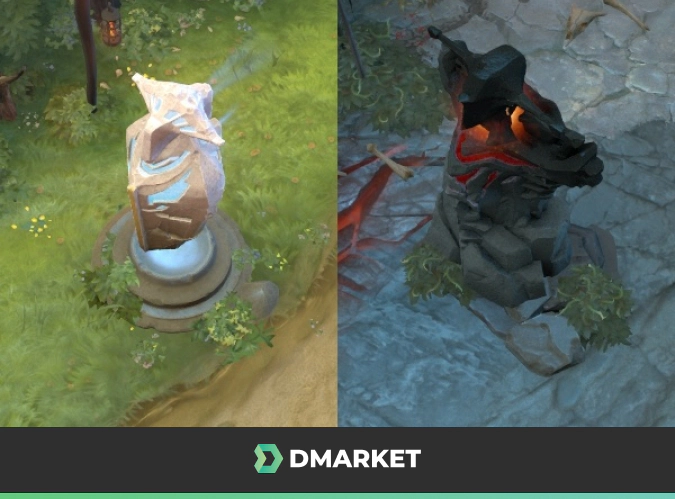 Tower abilities include:
Tower abilities include:
- True Sight
- Tower Protection
- Tower Armor Bonus
Each tower has an 800 vision radius at night and almost double its size – 1900 – during day.
True Sight has a little lower radius – 700 points. Tower Protection is an ability that increases the armor of nearby allied heroes for 0.5 seconds.
NOTE! Tower Armor Bonus increases the armor of a certain tower when an enemy hero enters the skill range. The more heroes enter, the higher is the armor buff. This effect is not aura-based – the armor will adapt immediately with the appearance of an opponent hero.
Attack Priority. As you already know, there’s a lot happening in Dota. Towers can be besieged not only by heroes, but also by illusions and creeps of different natures, so the developers decided to add a regulated attack priority and escape possibilities of abusing certain game mechanics.
Here is the usual order of auto-attacks:
- If multiple enemies engage a tower, it attacks the primary offender first.
- Once the first enemy can no longer be attacked (he is out of reach, dead or invulnerable), the structure switches to the closest unit attacking the tower.
- If there is none of the above, the third priority goes to an enemy attacking an ally of the tower.
- Again, if there are no enemies classified as in number 3, the tower switches to the last priority level and attacks an enemy unit attacking an enemy of the tower.
Dota wouldn’t be Dota if it didn’t have exceptions and different conditions for particular situations. Here are they for the tower attack priority:
- At your rescue. If your or your ally’s health points are in the range of 500, and you are under an attack, the tower immediately switches its target to your current attacker. This only works for heroes, though. If you are attacked by anything other than an enemy hero, the tower won’t be at your defense, so calculate your powers carefully.
- Changing target. You, as well as your enemies, have a loophole to avoid being killed by the tower. If you start firing your skills at an allied unit while being in the tower attack range, it will disregard you as a threat and switch to another target. Note that this doesn’t require an attack to take place – you can target your ally, then immediately switch or deny an attack, and the tower will still switch to another aim.
Barracks
Barracks, also commonly referred to as Rax, are buildings near your base responsible for keeping your creeps at the same level as your enemies’. Destroying barracks doesn’t stop creeps from spawning, but it gives your opponent super creeps (if one barrack is destroyed) or mega creeps, in case you are left without two of them.
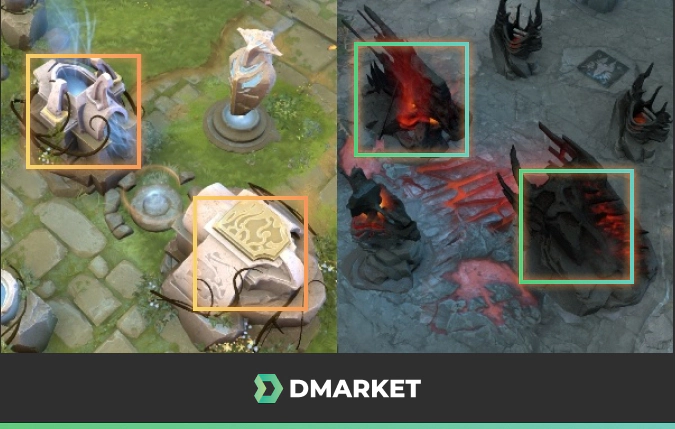 There are two Barracks at each line – Melee and Ranged.
There are two Barracks at each line – Melee and Ranged.
Ranged barracks are always situated to the left of the melee ones. The pair of barracks is guarded by Tier 3 tower in every line. Before the tower is destroyed, barracks are invulnerable.
Similar to a tower, Rax has a 1900 range vision during daytime and 800 at night. Other than that they don’t have any special skills, can’t attack and have no true sight.

Shrines
These are supportive buildings outside of your base to refill mana and health points, so you don’t have to teleport to the base every time. Each team has two shrines – the first one is situated between the mid and bottom lanes, halfway through the two jungle creep camps. The second one is closer to the top.
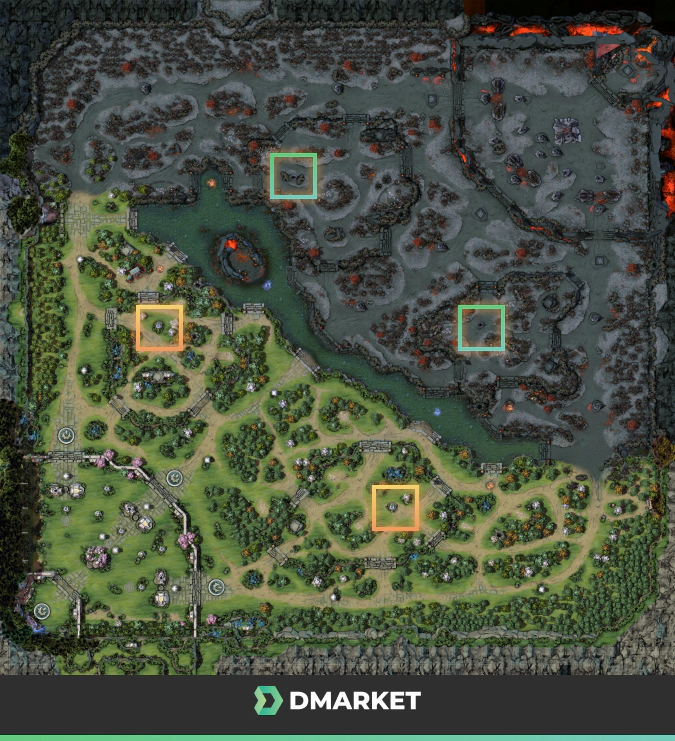
Shrines are indestructible unless you destroy at least one Tier 3 tower.
These structures don’t have vision and True Sight, which means they don’t act as free wards. The only skill they possess is Sanctuary. Once the hero approaches a Shrine, he or she enters the aura of the building, which grants health and mana regeneration (75 HP and 30 mana per second). The aura affects every allied unit within its range except for other buildings and wards. It also doesn’t affect invulnerable and hidden friendly heroes.
Effigy Buildings
These buildings exist for the sole purpose of distracting enemy creeps so they won’t reach Tier 4 towers or the Ancient very fast, and therefore gives the defenders a little time for maneuvering. Each base has eight Effigy buildings or filler buildings (in the gaming process they are often referred to simply as buildings). Five of them, located in a half-circle around the Ancient, are customizable.
Each of the five players from a team can customize one of the buildings, giving them a unique look and a message that is displayed after the building is destroyed. These buildings have no True Sight, no special powers and don’t attack. Their vision range is 900 during day and 600 at night.
Special Hero Ability Affecting Buildings
If you are having a tough time protecting your towers, you or your allies can use the Glyph of Protection. This is a universal ability available to every hero. This skill grants a 6-second invulnerability to your structures and creeps. As this talent has a long cool down and short effect duration, timing is crucial when using it.
 It’s often used to defend yourself from a push and have some additional time for organizing protection. The skill can also be used for offensive purposes – creep immunity implemented at the right time will help you destroy a couple of towers. Remember to think it through, as the cool down is 5 minutes!
It’s often used to defend yourself from a push and have some additional time for organizing protection. The skill can also be used for offensive purposes – creep immunity implemented at the right time will help you destroy a couple of towers. Remember to think it through, as the cool down is 5 minutes!
Also, the refreshment is shared by all players – it means that if your ally used the skill, you won’t be able to use it next. However, if a Tier 1 tower is destroyed, the Glyph is refreshed immediately. The skill can be activated by a button at the right of your minimap.
Dota 2 Item Shops
For sure, you have heard that you need items to enhance your hero’s Dota 2 talents and maximize skill performance. Dota wouldn’t be Dota if you just could click on the items you need when you got enough gold, and they would appear in your inventory. Obviously, everything is wa-ay more complicated.
Main Shop. This shop is situated near the ancient. Right after you spawn, you can shop early game items and go destroy your enemies. In fact, you can buy everything you need before the game starts. Every shop has a different set of items.
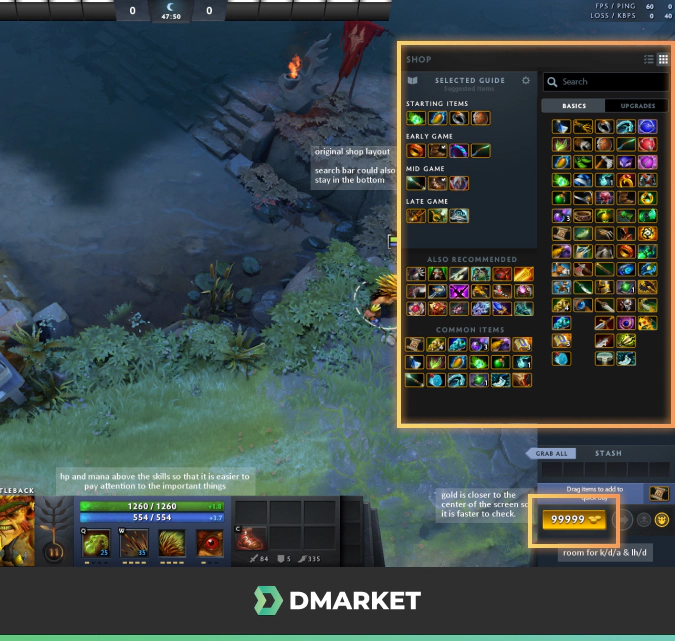
The main shop has the biggest set of items, but most of them are basic and low-cost. Also, this is the only place where you can purchase recipes for creating more powerful and advanced pieces of equipment.
Articles you can buy here are directly put in your stash. Also, it doesn’t matter where you are shopping. Technically you can buy something at the opponent’s shop if you are standing close enough, and if your inventory is full, the item will be transferred to the stash.
It is also frequently used for creating a more advanced item consisting of several parts. You certainly don’t want to carry an extra item around you don’t really need, so you can put it in a stash while you are saving money and use an empty slot for a Bottle or a Portal Scroll.
Side Shop Side Lane Shop is located at the utmost right corner for team Radiant, in the jungle near on the bottom line near the river, and at the opposing left corner for the team Dire. Here you can buy some of the basic items from the main shop, so you can stay in line longer, farm more and return to the base later.
 Players can use a shop regardless of the team they are playing for (e.g. you can shop at Dire’s place if you are a Radiant). This shop can be used by couriers. All the items from the side shop can be found at the base shop, except for the Energy and Vitality Boosters. Side shop in the Dire side is tended by a merchant named Quirt, and the Radiant one is run by Sithil (heroes from “Are We Heroes Yet?”, a Dota 2 official comic).
Players can use a shop regardless of the team they are playing for (e.g. you can shop at Dire’s place if you are a Radiant). This shop can be used by couriers. All the items from the side shop can be found at the base shop, except for the Energy and Vitality Boosters. Side shop in the Dire side is tended by a merchant named Quirt, and the Radiant one is run by Sithil (heroes from “Are We Heroes Yet?”, a Dota 2 official comic).
Secret Shop. And finally we are revealing the last shop in the game – the secret one, if you are still following. Why are there so many shops? First of all, this allows you to shop all the crucial items while staying near your line, meaning that you won’t lose precious time or Teleport scrolls. Secondly, all shops contain a slightly different set of items. And finally, Dota isn’t about being easy, right?
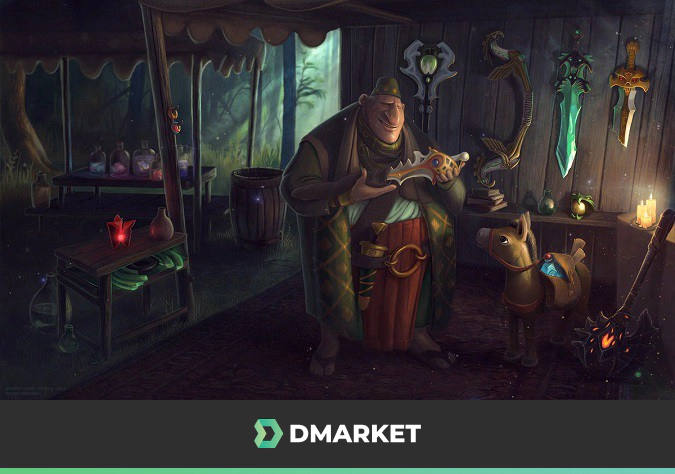 Secret shops are located closer to the middle line, as opposed to the side ones. As with any other shop in the game, you can use the place on the both sides of the map. This shop can be also used by Couriers.
Secret shops are located closer to the middle line, as opposed to the side ones. As with any other shop in the game, you can use the place on the both sides of the map. This shop can be also used by Couriers.
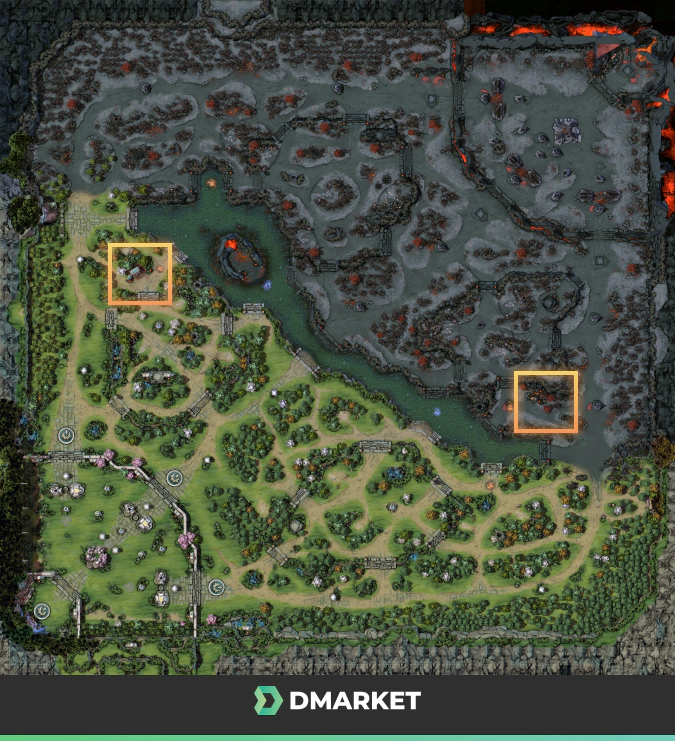
Secret Shop is full of unique items, which you cannot find elsewhere, except for the Void Stone, Energy and Vitality Boosters, which are also accessible at the Side Lane shop. Both Secret Shops are run by the Shopkeeper.
Dota 2 Items (Introduction)
Before we dive into the extensive world of Dota 2 items and examine them in detail, let’s have a quick overview of the best dota 2 skins.
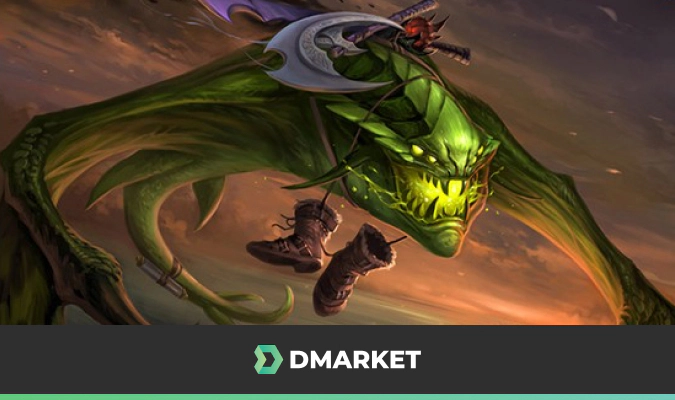 This can seem utterly overwhelming (and in fact, it is), but don’t worry. As you begin to play, you will automatically learn most of the terms needed for communicating your ideas and strategies.
This can seem utterly overwhelming (and in fact, it is), but don’t worry. As you begin to play, you will automatically learn most of the terms needed for communicating your ideas and strategies.
Besides the abilities, there is an opportunity for any Dota 2 hero to purchase artifacts that can enhance some of its characteristics or even add a new ability.
In the knowledge base, all the artifacts are generally divided into three main types:
- Basic items
- Upgrade items
- Secret items
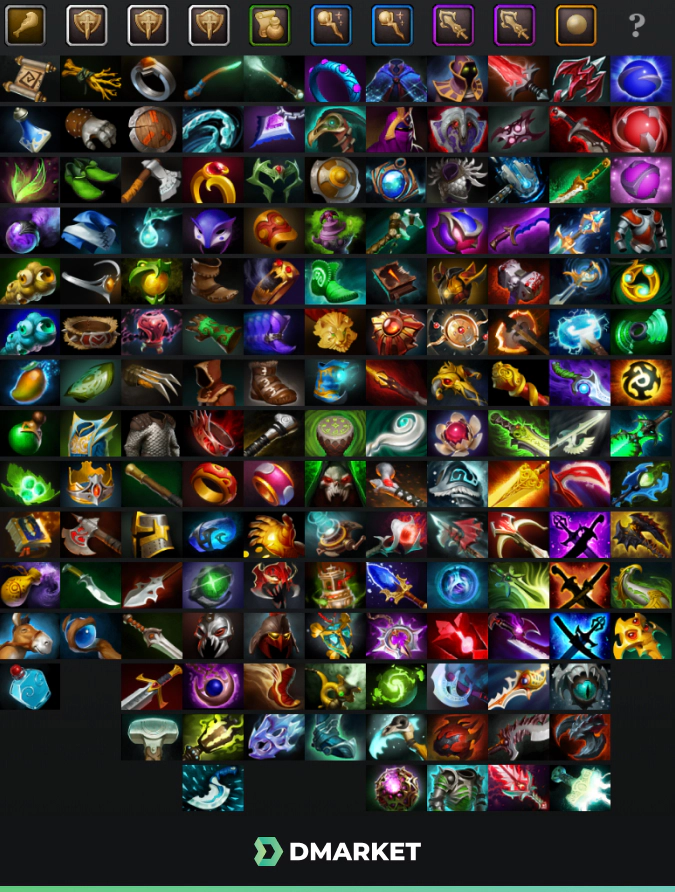
The Basics category items are sold in the main and side shops, Secret items are sold only in the Secret Shop.
The items from these two categories also serve as components and prerequisites to buy items from the Upgrades category.
This may seem too complicated at first, but soon you’ll get the idea. Simply put, Basics and Secret items are just bought in the store and immediately give some improvement. Upgrades are collected using different combinations of Basics and Secret items, and sometimes recipes.
Let’s say you need to increase your character’s movement speed. To do so you have to buy Basics rated Boots of Speed for 500 coins. By clicking on the Basics item you can see what Upgrades artifact it is a part of.
The Basics category items are sold in the main and side shops, Secret items are sold only in the Secret Shop. The items from these two categories also serve as components and prerequisites to buy items from the Upgrades category.
This may seem too complicated at first, but soon you’ll get the idea. Simply put, Basics and Secret items are just bought in the store and immediately give some improvement. Upgrades are collected using different combinations of Basics and Secret items, and sometimes recipes.
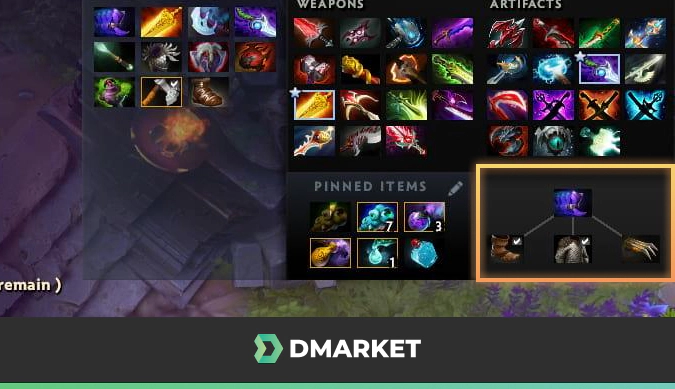 Here above the boots, you see the variants of items from the Upgrades category. For instance, you want to have a mana growth. To get the missing elements you go to the Secret Shop and buy an Energy Booster for 900 coins, which adds 250 mana.
Here above the boots, you see the variants of items from the Upgrades category. For instance, you want to have a mana growth. To get the missing elements you go to the Secret Shop and buy an Energy Booster for 900 coins, which adds 250 mana.
And now the kicker is, that Boots of Speed together with Energy Booster form a single artifact of the Upgrades category – Arcane Boots, which provides a passive +50 run speed increase, +250 mana boost, and when activated, restores 135 mana to your hero and nearby allies.
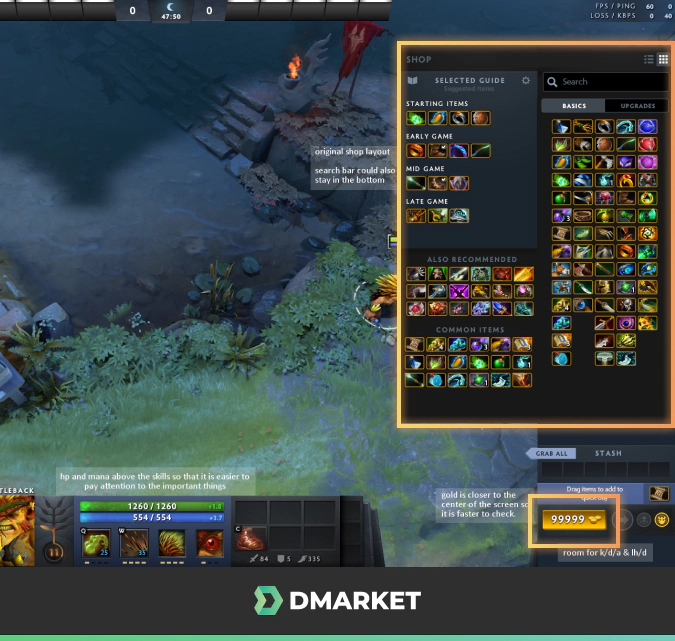
The principle is pure and simple, you buy items from the Basics and Secret categories and assemble the required Upgrades. A bit later, we’ll talk about what items are the best fit for any particular character, and which of them appear to be more useful at different stages of the game.
There are some pieces of information about Dota 2 items you should remember:
-
Heroes cannot use items owned by other heroes, with a handful of exceptions. See Item Sharing for details.
-
Some items can be disassembled. See Disassembly for details.
-
Most items may be sold back to vendors for all of the gold spent, if sold within 10 seconds after purchasing, and the item’s active ability (if it has one) has not been used yet.
- After ten seconds have passed, or the item’s active ability has been used, selling an item only recoups 50% of its original price.
- Gem of True Sight and Divine Rapier cannot be sold at any time.
- Enchanted Mango cannot be sold after the preparation time.
- The starting teleport scroll and any items gained from selecting a Dota 2 bonus hero or randoming cannot be sold.
-
Most dropped items can be destroyed by force-attacking them (default key: A).
- Allies’ items which are not flagged as shareable cannot be destroyed.
- Gem of True Sight and Divine Rapier cannot be destroyed.
-
Most item effects cannot be effectively stacked with multiple copies of the same item on a single hero, with the copy only being able to provide the base stats of the item.
- Cooldowns are shared between identical items with active abilities, and if one item with an active ability can be upgraded into another, most of the time both will share a cooldown.
- Multiple instances of the same aura or debuff will not stack, even if the two copies of the item providing it are owned by separate heroes.
-
Some items do not provide their effect to heroes with passive abilities providing the same or similar effect. For example, most heroes with a bashability cannot use the passive ability from Skull Basher.
-
Some items have effects that only apply to heroes that are ranged or melee.
-
The shop at the enemy fountain can also be used to buy items, sell items, and access the stash.
- The Secret Shops and Side Lane Shops have a restricted inventory, and cannot be used to access the hero’s stash
Basics
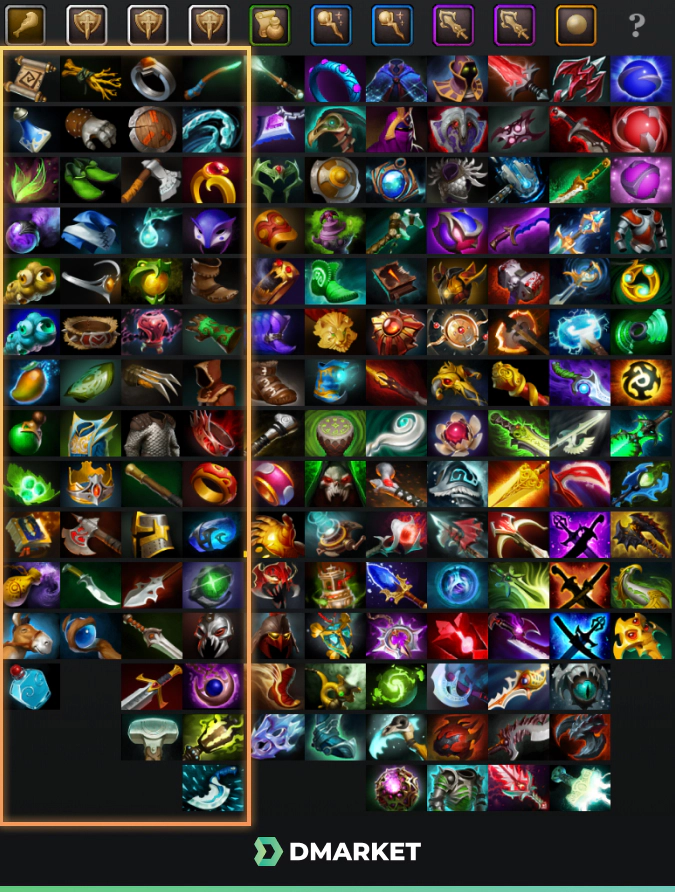
Consumables
Disposable items that can be used a limited number of times during the game. They do not give any additional passive characteristics to a hero (except for Mango, until you use it).
Basically, these are supportive items: healing potions, wards, etc.
Attributes
These are the things that add one or more attributes to your hero: Strength, Agility, Intelligence. This is the first kind of item that can be further used for the Upgrades category.
Armaments
Type of items that increase damage or armor to your hero. Some of them add passive effects to your attack, which can slow down the enemy or reduce his armor.
Arcane
Type of items that passively and actively improve the characteristics of your hero. They raise movement speed, and add some passive abilities to increase defence and health regeneration rates.
Upgrades

Common
The first types of item that require prerequisite components for assembling. They add passive and active abilities improving your hero’s attributes. Most of them serve as components for higher class items.
Support
These items are used to support your allies. They can restore health and mana, as well as provide a passive boost of basic characteristics.
Caster
The items add some active abilities to a hero. These abilities can strengthen your hero throughout the whole game. Invisibility, the summoning of helpful creatures, reset of all ability cooldowns, cast of dispelling, weakening and silencing effects and the like.
Armor
The items enhancing your hero’s chances to survive in teamfights. They passively increase the armor, add the ability to reflect and absorb damage, the ability to be invulnerable to spells, and add the ability to regenerate health.
Weapons
Equipment that greatly increases your hero’s ability to deal out damage. They increase the chance of critical attack, and add passive abilities to splash damage and bash.
Artifacts
Items that grant passive auras to your hero. Along with the aura, some of them can add active abilities improving your hero’s damage or giving additional boost effects to attacks.
Secret
The items, which are sold only in the Secret Shop and used largely to create high-profile items.
Dota 2 Heroes
Dota 2 Characters are one of the main elements of the gameplay. What do you think, how many heroes in the Dota 2 Tier list? Each player can choose 1 out of 119 available heroes.
You can pick one and the same hero only once for every particular match.
It holds true when we talk about the standard Dota 2 match, not any other custom game versions where you can choose up to 10 identical heroes.
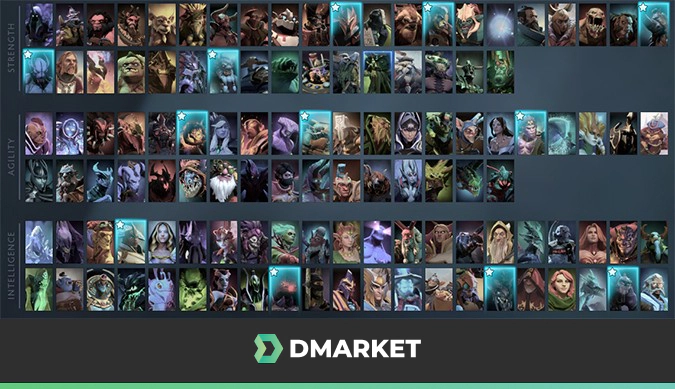 Each hero has his own role in the game, which he is best suited for. For example, some heroes can better initiate teamfights, while others are the best at doing damage.
Each hero has his own role in the game, which he is best suited for. For example, some heroes can better initiate teamfights, while others are the best at doing damage.
All Dota 2 heroes are sorted by three core attributes:
- Strength is the main attribute of mighty warriors who have a large health pool and good regeneration. They are able to initiate teamfights and withstand a large number of attacks. Most of them are melee strength heroes.
These characters are on the front lane in a teamfight, because they can absorb a large amount of damage from enemies. Basically, players should collect some useful artifacts to help melee heroes initiate teamfights and survive in every fight as long as possible.
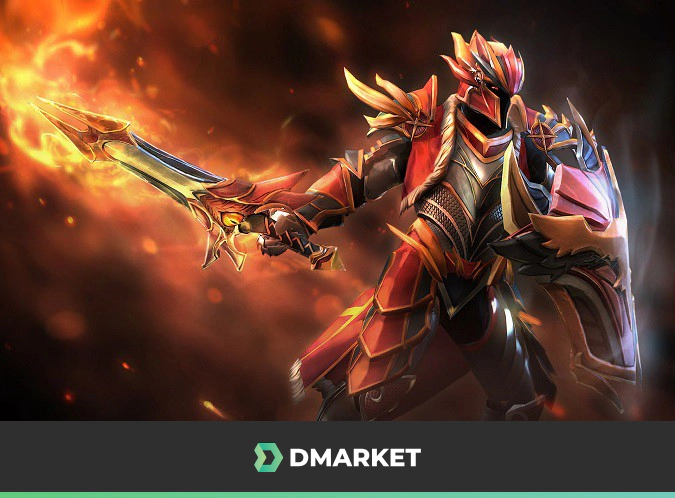
- Agility – a must-have attribute for fast and clever killers, who cause a lot of damage and have great movement speed. These are usually the heroes dealing a lot of damage with their constant physical attacks.
They fit the roles of Ganker and Damage Dealer. The main task of Agile heroes is to inflict as much damage as possible, so they usually need to be equipped with artifacts increasing the damage.

- Intelligence is the main attribute of spell casters. They have a large supply of mana, and can cast lots of spells of various types, ranging from support to attack spells. Most of these heroes have small armor, but are always ready to use their spells to leave a fight or quickly kill an enemy hero.
The majority of the Intelligence heroes utilize ranged attacks, and fill various roles from Support to Damage Dealer. To use these heroes to the fullest, one must provide them with artifacts increasing a mana pool and amplifying spell damage.
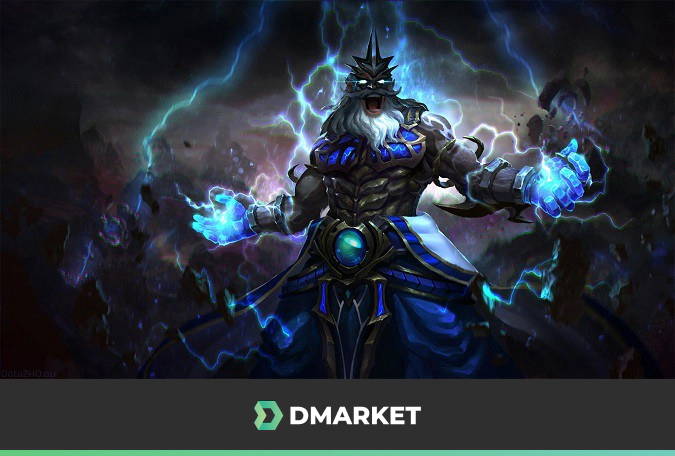
Heroes Leveling
Every hero starts off at level 1 and can level up 24 times, up to level 25. Each new level grants the hero some attribute points (different values for each hero) and an ability point which they can use to level up abilities or a talent. Some abilities and abilities levels require the hero to be on certain levels. Most basic abilities have 4 ability levels and can be leveled on level 1, 3, 5 and 7.
Talents can be upgraded at levels 10, 15, 20, and 25. Ultimates usually have 3 levels and can usually be leveled up at level 6/12/18.
The exceptions are Meepo, who requires different levels for his ultimate, and Invoker, who has unique ability scheme.
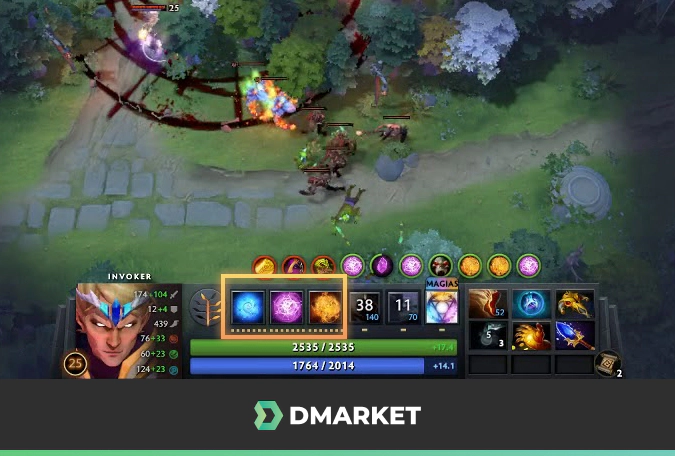 Heroes level up through the means of experience, which is gained by killing enemy units, or by being within proximity of an enemy unit while an ally kills that enemy unit. The required distance to gain experience is 1300 if the kill is not done by the hero, or if the killed unit was not a hero.
Heroes level up through the means of experience, which is gained by killing enemy units, or by being within proximity of an enemy unit while an ally kills that enemy unit. The required distance to gain experience is 1300 if the kill is not done by the hero, or if the killed unit was not a hero.
Killing other heroes always grants experience, regardless of distance. When multiple heroes are within range of an enemy unit which gets killed, the experience gets evenly split among the heroes. This includes every single clone of Meepo, but excludes Arc Warden’s Tempest Double.
If a hero is already on max level, it still gets its share of experience when within range, even though it has no use for it anymore, causing it to get wasted. A hero cannot gain and does not get its share of experience while dead.
A level up is indicated by a visual effect, an angled yellow light beam from the sky shining on the hero. This light beam is visible to everyone. A sound effect is also played, which is only audible to the player.
Dota 2 Heroes Abilities
Abilities are unique skills that heroes and creeps have access to on the battlefield. They range from simple passive effects, to devastating explosions of energy, to complex, terrain changing feats. All heroes have four or more abilities, three or more basic abilities and an ultimate ability, that they can assign ability points to every time they level up. Every level in an ability makes it more powerful, sometimes increasing its mana cost as well.
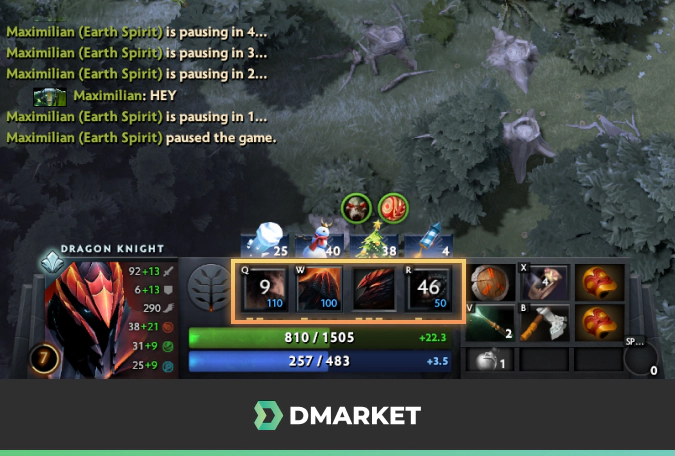 Heroes usually have four abilities: three basic and an ultimate ability.
Heroes usually have four abilities: three basic and an ultimate ability.
Some characters may have additional fifth and sixth abilities, sometimes an additional ability appears after buying the Aghanim’s Scepter artifact.
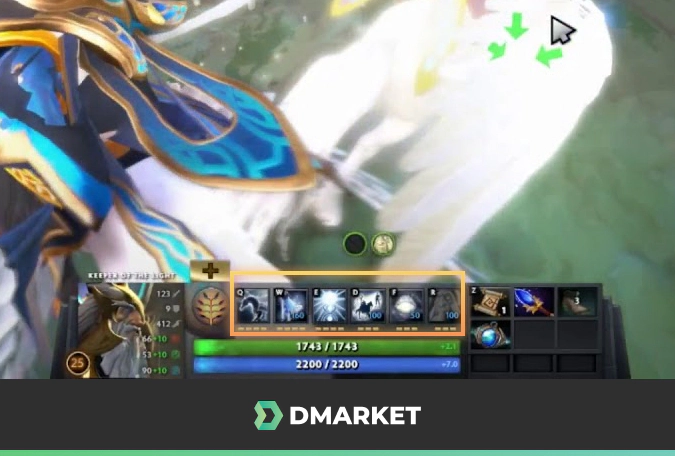 Throughout a game, a hero gains experience and can upgrade his ability level. As your hero levels up, it becomes possible to improve one of the abilities. Adding the first point activates the first level of ability (until then this ability is inactive and gives nothing to an owner), then the basic ability can be upgraded to the fourth level, and the ultimate ability to the third respectively.
Throughout a game, a hero gains experience and can upgrade his ability level. As your hero levels up, it becomes possible to improve one of the abilities. Adding the first point activates the first level of ability (until then this ability is inactive and gives nothing to an owner), then the basic ability can be upgraded to the fourth level, and the ultimate ability to the third respectively.
(NOTE!) Each level upgrade improves ability performance and damage dealt, increases the passive effect, reduces cooldown times, etc.
Active Abilities
The abilities that are activated manually by a player. Most abilities in Dota 2 are active. Basically active abilities are charge-based, consume mana and have different targeting types.
- Examples of active abilities are Weaver’s Shukuchi, Ursa’s Overpower, and Necrophos’s Reaper’s Scythe
Targeting types for abilities in Dota 2:
- No Target
Abilities with the no target requirement are immediately cast as soon as its button is pressed. Many of these abilities do not have a cast time. They cannot directly target a unit or a point. They usually affect the caster, or units around the caster. They can affect an area around the caster, or have a global effect.
Examples of instant abilities are Mirana’s Leap, Slardar’s Slithereen Crush, and Zeus’ Thundergod’s Wrath.
- Toggle
Toggle abilities are always non-targetable. These abilities apply a periodic effect and often drain mana or health as long as they are toggled on. These effects can range from damaging or healing nearby allies, to switch between attack types, and to manipulate other abilities of the unit.
If the toggle ability drains mana over time, it turns itself off once not having mana to support it anymore. They cannot be forcibly turned off by anyone but the player by pressing their button again, or by dying. Like regular spells, they cannot be used (in this case, turned on or off) while affected by disables which prevent ability usage.
However, once they are toggled on, they persist through any form of disable, including silence.
Examples of toggle abilities are Io’s Overcharge, Leshrac’s Pulse Nova, and Wraith King’s Vampiric Aura.
- Target Point
Point target abilities require the caster to target a point or an area. Upon pressing such a spell’s button, the cursor turns into a crosshair that determines where the ability will be cast, or in which direction it will be cast. Point targeting abilities can have very varying effects. For some spells, it merely determines the direction to launch an effect, for other spells it determines an exact point where an effect will be applied.
Examples of point target abilities are Techies’ Remote Mines, Spectre’s Spectral Dagger, and Morphling’s Waveform.
- Target Area
Area target abilities work like point target abilities, with the only difference being that they require the caster to target a whole area, instead of a point. Upon pressing such a spell’s button, the cursor turns into a targeted area indicator which shows the area the ability will affect.
Upon cast, these abilities usually affect the whole targeted area, or all units in the area. Some apply their effects once upon cast, and some apply a lasting effect which affects units which enter the area after cast.
Example of area target abilities are Crystal Maiden’s Crystal Nova, Alchemist’s Acid Spray and Faceless Void’s Chronosphere.
- Vector Targeting
Vector targeted abilities work similar to point target abilities, with the difference being that after choosing the initial point, a direction from that point can be chosen by dragging the cursor in the desired direction.
The only vector targeted ability as of now is Pangolier’s Swashbuckle.
- Target Unit
Unit target abilities require the caster to directly target a unit, and cannot be used on the ground. Upon pressing such a spell’s button, the cursor turns into a crosshair that determines on which unit the ability will be cast. Most unit targeted abilities affect only the target.
Abilities that apply their effect to a single unit are often called “single target spells”. When targeting a unit which is out of cast range, the caster follows the unit until it gets in cast range or cannot be targeted anymore (e.g. the target turns invisible).
Examples of unit target abilities are Lina’s Laguna Blade, Vengeful Spirit’s Magic Missile, and Omniknight’s Repel.
- Target Point or Unit
Some point targeted abilities may also be able to directly target a unit. In such cases, the spell is cast towards the targeted unit’s current location. If the target unit is out of cast range, the caster follows it until it is within range and casts the spell on the unit’s position.
Even when the target moves during the cast animation, the spell is still cast on it, or launched towards it if it is a traveling effect. This does not cause the spell’s actual effects to home in on the target.
Examples of point target abilities which can also target units are Sand King’s Burrowstrike, Nature’s Prophet’s Sprout, and Lina’s Dragon Slave.
- Target Unit with area effect
A few single-target abilities have an effect on the area around the primary target. Like unit targeted abilities, these must be directly cast on units, and cannot be cast freely on any area. Such abilities have their own targeting cursor, which resembles the targeting cursor of ground targeted area spells.
They have the same blue ring like area targeted spells, and have pulsing gapped rings which start at the center and move outwards. At the center, they have a small yellow reticule, indicating that a unit must be targeted.
Examples of unit target abilities with area effects are Sven’s Storm Hammer, Oracle’s Fortune’s End, and Winter Wyvern’s Winter’s Curse.
Passive Abilities
The abilities that are activated just after being learned. In most cases, these abilities do not require mana and do not have recharge, and work throughout a hero’s lifespan as an additional effect or as an aura around them. These skills cannot be activated manually.
Examples of passive abilities are Wraith King’s Reincarnation, Crystal Maiden’s Arcane Aura, and Drow Ranger’s Marksmanship.
Autocast
Autocast abilities are special active abilities that can be toggled on or off, or manually cast. Disables such as silences and stuns do not prevent a unit from toggling its autocast abilities on or off. However, autocast abilities cannot be used when silenced as with all other spells.
Most auto-castable spells are active attack modifiers, applying a modification to the user’s attacks when activated. When toggled on, the ability will apply whenever possible. For example, Drow Ranger’s Frost Arrows will be used whenever she attacks a target.
When toggled off, they will not be used and will not consume mana. When an active attack modifier is manually cast, it is partially treated as a spell cast instead of as an attack. This causes nearby enemy creeps to not aggro when using them that way. This is also known as orb walking.
Not all abilities with autocast are attack modifiers. A few of them are regular abilities, which, when toggled on, will automatically be cast when their requirements are met. An example of such is Ogre Magi’s Bloodlust. When toggled on, Ogre Magi will automatically cast Bloodlust on nearby allied heroes.
Auto-castable abilities have almost the same appearance as regular active abilities.
They also have a bevel which turns white when selected and green when casting. However, they do not turn green for attack modifiers. On top of that, they have a thicker second bevel behind the first bevel. This one glows orange when the ability gets set to autocast.
Status Effect
Active and, in rare cases, passive abilities or items can cause many different effects on heroes and creeps.
List of heroes’ status effects :
- Stun (Shackle) – Unit is unable to move or perform any actions. Shackle is the same as stun, but requires the attacking hero to channel the effect.
- Root – Unit is unable to move, but can perform some actions.
- Hex – Unit is transformed into a critter, and is unable to perform any actions except move at a slow pace.
- Cyclone – Unit is swept into the air, where it is invulnerable, but cannot move or perform any actions.
- Hide/Banish – Unit is temporarily removed from the game map, and cannot be damaged or affected by any other mechanics.
- Blind – Unit has a chance to miss basic attacks.
- Silence – Unit is disabled from using unit abilities, but can still use item abilities.
- Mute – Unit is disabled from using item abilities.
- Break – Unit’s passive abilities are disabled.
- Disarm – Unit cannot attack, but can still use abilities.
- Slow – Unit’s movement speed is reduced. Most slows end after a set time, while other slows gradually decrease over time.
- Trap – Unit’s movement is restricted by barriers, but can still perform actions.
- Taunt – Unit is forced to attack a certain target, ignoring player input.
- Fear – Unit is forced to run towards their team’s fountain, ignoring player input.
- Forced movement – Unit is forced to move in a certain direction, ignoring player input.
- Teleport/Blink – Unit moves to a location instantaneously.
- Invisibility – Unit cannot be seen by normal vision, but can be detected by True Sight.
- Phased – Unit can move through other units, ignoring collision size.
- Invulnerability – Unit cannot be damaged by physical attacks.
- Spell immunity – Unit cannot be targeted or affected by most spells.
- Ethereal – Unit assumes a ghostly form, becoming immune to physical damage, but takes more magical damage. Ethereal units cannot attack.
The interaction between the status effects applied and hero’s own abilities:
| Disable | Target’s Interaction with the Disable | ||||
| Movement | Attack | Ability Usage | Item Usage | Vulnerable | |
| Stun, Shackle | prevented | prevented | prevented | prevented | yes |
| Sleep, Cyclone | prevented | prevented | prevented | prevented | depends |
| Movement Slow | slowed | normal | normal | normal | yes |
| Attack Slow | normal | slowed | normal | normal | yes |
| Silence | normal | normal | prevented | normal | yes |
| Break | normal | normal | disables passives | normal | yes |
| Mute | normal | normal | normal | prevented1 | yes |
| Forced Movement | forced | depends | depends | depends | yes |
| Root | prevented2 | normal | normal3 | normal | yes |
| Hex | reduced | prevented | prevented | prevented | yes |
| Trap | confined | normal | normal | normal | yes |
| Taunt | forced | forced | prevented | prevented | yes |
| Fear | forced | prevented | prevented | prevented | yes |
| Hide | prevented | prevented | prevented | prevented | no |
| Ethereal | depends | prevented | normal | normal | only to spells |
| Disarm | normal | prevented | normal | normal | yes |
| Blind | normal | misses | normal | normal | yes |
Any status effect can be removed from a hero or creep by dispelling. In Dota 2, there are several types of dispelling:
- Basic dispels are able to remove most basic stats altering effects like speed or damage bonuses or slows and silences. However, they are unable to remove most hard disables like stuns or Forced Movement.
- Strong dispels are capable of removing everything a basic dispel and spell immunity can remove. On top of that, these can also remove many more status effects, including hard disables. Whether or not strong dispels can remove positive effects is unknown, since there is no source of strong dispel which can be applied to enemy units.
- Death applies the ultimate dispel on units. It removes almost everything. Only a few effects are not dispelled by death.
Talents in Dota 2
Each hero, in addition to upgrading abilities, is able to gain talents. Each hero can choose four talents from eight possible, with their respective upgrade available at 10, 15, 20 and 25 levels. All of them have passive effects, which can be either the improvement of some hero’s abilities and basic characteristics or gold and experience gain.
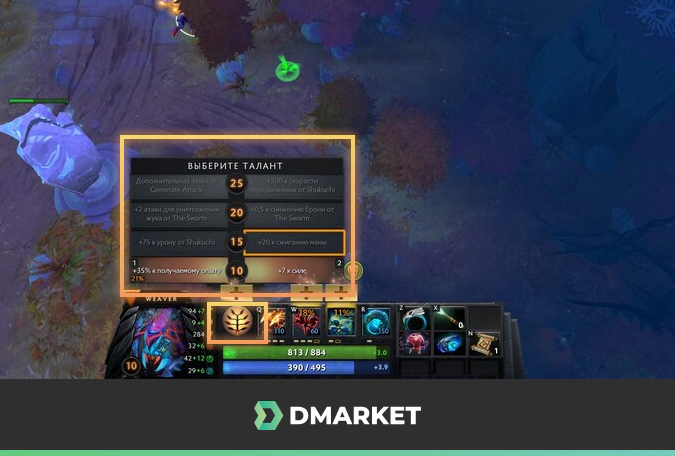
Game Stages
For your convenience, each Dota 2 match is divided into stages. This is not an official division from the developers though, just the numbers and titles that have appeared in this game over time. Understanding the game stages helps you figure out what artifacts your enemy might have at that particular moment, whether you lag behind with farming and when you can take down enemy towers and Roshan.
Draft
There are several game modes in Dota 2. In any game mode, the team should choose the core heroes not later than at the very end of the draft, so that the opponent could not do the same.
The most popular game modes are:
All Pick
Choose from the full hero pool.
Players can choose any hero, random a hero, re-pick a hero once, or swap heroes with teammates.
- 75 seconds hero selection time, instead of the default 60.
- 75 seconds pre-creep time, instead of the default 90.
- Players lose one gold per second if they haven’t picked a hero after the selection timer runs out.
Turbo Mode
This game mode has the same rules as All Pick. However, in order to shorten the match time, several differences exist:
-
Faster drafting.
- 100% ban any hero.
- All players pick at the same time.
- Lower timers on all ban, pick and strategy phases.
-
Increased gold and experience gains.
- Passive gold doubled.
- Midas gold doubled
- Experience gained doubled.
-
No gold lost on death.
-
Weaker towers.
- All Tier towers have 1200 HP.
- Tier 1 armor – 12.
- Tier 2 and 3 armor – 14
- Tier 4 armor – 21
-
Creeps are upgraded at a much faster rate than normal.
- Creeps are upgraded at wave 6 and every 5 waves afterward (i.e. 11, 16, 21, 26…)
- Creeps receive 3 upgrades compared to normal mode each time they are upgraded.
-
Reduced respawn timers.
- -1 second for every level you have to the normal respawn timers.
-
Faster and invulnerable couriers.
- All heroes get their own flying couriers without buying one.
- Couriers auto-deliver items when items are in the stash or in its inventory. Can be toggled off.
- Couriers are permanently hasted at 1100 movement speed and are permanently invulnerable.
Ranked Matchmaking All Pick
Matchmaking is the process through which the system groups players into opposing teams for public games. With the exception of bot games, matchmaking is mostly determined by matchmaking ratings (MMR).
The All Pick mode in ranked matches works different than the regular All Pick mode, and is called Ranked Matchmaking.
-
At first, every player has 15 seconds to vote for a hero to get banned.
- All players select a hero at the same time.
- A hero may only be voted for once. Two players cannot vote for the same hero.
- The game displays heroes as they are voted on, but not who voted.
- After 15 seconds, half of the heroes that were voted on get randomly selected and banned.
- The number of bans is equal to half the total number of votes. If there is an odd number of votes, the number of bans is randomly rounded up or down.
- The random ban selection chooses at most 3 heroes from one specific team’s votes, so it is more evenly split.
-
Right after the banning phase, the picking phase begins.
- Teams have up to 25 seconds to pick a hero. If the timer expires, each player that hasn’t selected a hero loses 2 gold per second. The selection will stay on this team until a hero is picked.
- Once a selection is made, it immediately switches to the other team to pick.
- Initial starting team is random, but known at the start of the strategy period.
- If a team has not picked and continued losing gold for more than 30 seconds, a player that hasn’t picked is assigned a random hero and the turn returns to the other team.
- If one player disconnects in this stage before picking a hero, turns continue and other players are able to spawn after 30 seconds of his turn to pick. That player is assigned a random hero upon their reconnect.
- If a player does not enter battle with his hero until after the 0:00 mark, that player’s gold is removed and distributed to all of the players on his team. Similar to if he had abandoned, but it does not count as an abandon for the sake of the game being safe to leave.
-
Picking one of the 12 daily heroes grants the player an Enchanted Mango at the beginning of the game.
-
Randoming: Players can choose to random a hero from a pool of 12 daily heroes.
- Players may random manually on their turn, instead of picking. However, the last picking player cannot random.
- The randomed hero cannot be repicked.
- Randoming a hero gives the player a Faerie Fire and an Enchanted Mango at the beginning of the game.
Ranked matchmaking Captains Mode
- Each team’s captain bans and chooses heroes for the team.
- Captains mode is the standard format for tournament games. The captains ban certain heroes, up to six per team, preventing either team from picking the hero. The captain also chooses five heroes for their team. After the captains choose five heroes, each player chooses a hero from their captain’s selections.
- 35 seconds are allotted for bans, and 35 seconds for picks. Each captain has 130 seconds total bonus time that can be used throughout any selection. If time runs out during a ban selection, no hero will be banned; if time runs out during a pick selection, a random hero will be chosen.
- In Unranked matchmaking, the player that clicks the “become captain” button first is the captain;
- In Ranked, the captain is the player on each team with the highest solo MMR. The starting team is randomly selected in matchmaking;
- If playing in a private lobby a starting team may be specified.
Some heroes that were recently created or tweaked are unavailable in Captains Mode; they will be added eventually.
Before picking the heroes in any of the modes, one should think over various combinations to choose. And what has to be done if one of the heroes is banned or the enemy has already chosen him.
Early Game (Laning Stage)
Time: 1st min – 15~20 min
The Dota 2 map consists of three lanes: top, middle and bottom. The regular arrangement is as follows:
- Easy Lane – Carry, Support
- Midlane – midlaner
- Off Lane – offlaner, Support\Roamer
Of course there are different situations, sometimes one of the heroes can be permanently in the forest, sometimes the 4th position can be on the line along with the carry and the 5th position, creating a triple lane and the like.
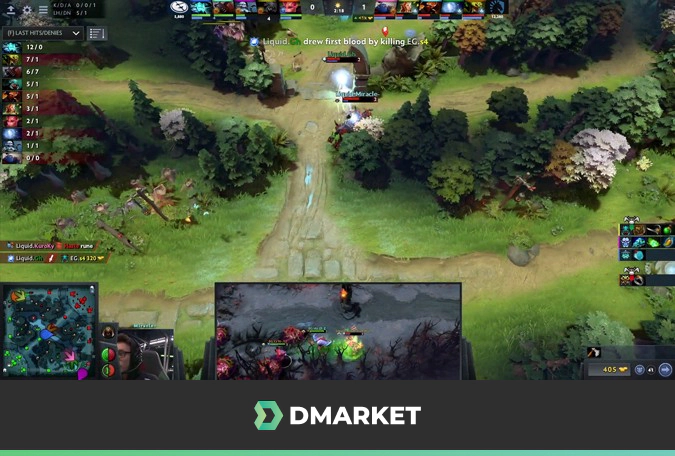 But we consider the most frequent of all options.
But we consider the most frequent of all options.
At the beginning of the game, all the heroes farm and try to get as much gold as possible to buy the necessary artifacts.
The Carry should always stay on his own line and only in some situations, when you can surely make more than 1 kill, he moves to another line. In such cases, some other hero must occupy the line. In fact, this is the rule of thumb to replace missing heroes when they are out of the line in order not to lose gold and experience.
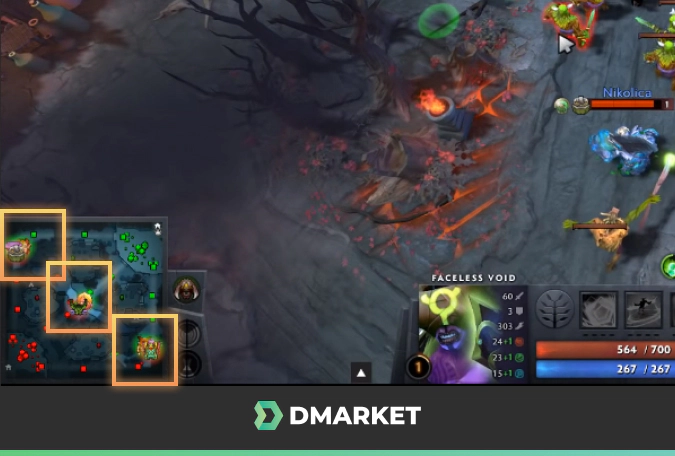 The Midlaner should go out on ganks only after reaching level 6 and getting an ultimate ability. This gives the greatest advantage over the enemy, who at this time will have level 3-4 (if there are two enemy heroes standing on the lane).
The Midlaner should go out on ganks only after reaching level 6 and getting an ultimate ability. This gives the greatest advantage over the enemy, who at this time will have level 3-4 (if there are two enemy heroes standing on the lane).
The Early Game phase ends within 15-20 minutes, depending on the selected heroes. To begin a fight it’s relevant when the core heroes have got the necessary artifacts. For example, an offlaner buys the Blink Dagger for initiation, and a carry gets the Black King Bar and is able to resist the enemy’s disabling spells.
Mid Game
Time: 1621 min – 3540
After the laning stage comes the mid game. There are continuous 5 vs. 5 fights starting off throughout the map, and each team tries to push down enemy buildings.
 It is important to realize that if you have an advantage over an opponent, and managed to destroy more buildings, you should not slow down. Supports should place more aggressive wards, for example in an enemy forest and necessarily on the outlets to the river from the enemy side. One must try to control most of the map in order to lock the enemies at their base and engage them in a fight.
It is important to realize that if you have an advantage over an opponent, and managed to destroy more buildings, you should not slow down. Supports should place more aggressive wards, for example in an enemy forest and necessarily on the outlets to the river from the enemy side. One must try to control most of the map in order to lock the enemies at their base and engage them in a fight.
When your opponent is prevailing, try to find some space for farming and wait until the situation changes. Let your core heroes farm the forest and the lanes till they have the artifacts they need for a fight. Also, avoid head-on battles while your enemy is stronger.
 No matter what your chances to win are, do not forget to collect Bounty Runes. Runes give a huge advantage as the amount of money they give increases over time. Collecting most of the runes provides you with much more gold, even if your enemy managed to make some kills before and to farm on the line that is better that you.
No matter what your chances to win are, do not forget to collect Bounty Runes. Runes give a huge advantage as the amount of money they give increases over time. Collecting most of the runes provides you with much more gold, even if your enemy managed to make some kills before and to farm on the line that is better that you.
The control over Roshan becomes very important during the mid game stage. Killing him over and over again gives many rewards to your team. The first kill grants your core hero an extra life, thus allowing to act more aggressively on the map while attacking the enemy. With the second death of Roshan, the team receives the Cheese, a special item which restores all health and mana, which is also very useful in a long fight.
The third and other kills give you two enhancements, and the Refresher Shard, an indispensable item for heroes with strong ultimate abilities and long cooldowns. All these kill rewards grant many bonuses, especially when winning a fight may decide a match.
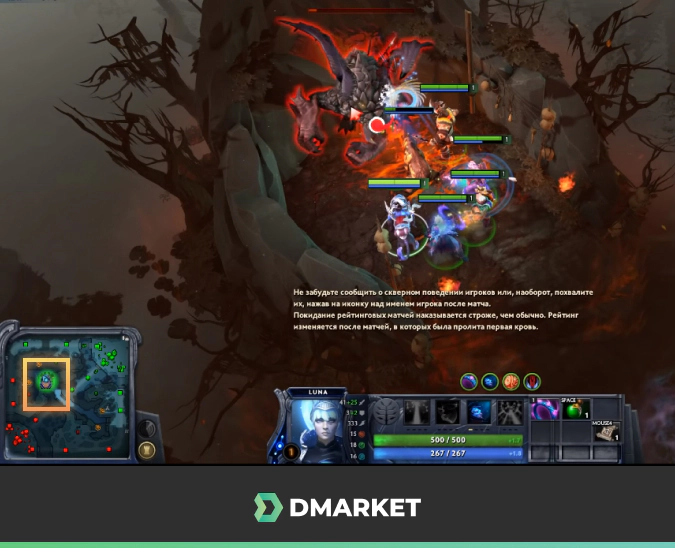 While in the mid game you should pay attention to collecting more gold to buy back your hero once he is killed. Losing a fight means nothing if you have enough gold for buyback.
While in the mid game you should pay attention to collecting more gold to buy back your hero once he is killed. Losing a fight means nothing if you have enough gold for buyback.
Do so when there is still a chance to get up with your enemy and kill him, or you are sure you can save an allied building from destruction.
However, overusing the buyback option when no urgent actions are needed is nothing more than a waste of gold. Even professional Dota 2 players may sometimes use buybacks for no reason.
Late Game
Time: 36~41 min +
If the game is not over during the Mid Game stage, it goes into to the Late stage. As a rule, the main heroes have already had all the necessary items up to this time. Supports usually do not get such items, unless the game lasts too long and even secondary heroes can acquire the best artifacts as well.
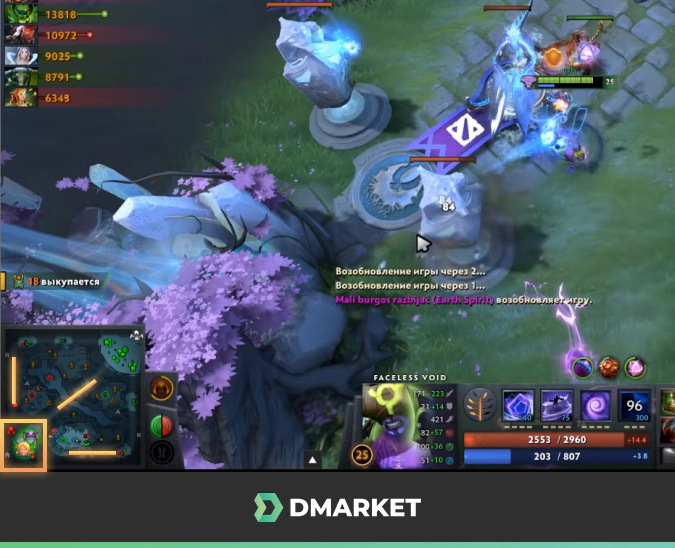 In most cases, when in the late game, teams are by and large equal in their gold amounts and game performance. There are quite a few buildings left, mostly on the base, and going far into the forest or along the lanes alone may be too dangerous. Most fights have a 5 vs. 5 format. Therefore, players should move close to each other or be able to quickly teleport to their allies.
In most cases, when in the late game, teams are by and large equal in their gold amounts and game performance. There are quite a few buildings left, mostly on the base, and going far into the forest or along the lanes alone may be too dangerous. Most fights have a 5 vs. 5 format. Therefore, players should move close to each other or be able to quickly teleport to their allies.
The essence of the late game stage boils down to the fact that someone must force the enemy faction to make a mistake. You need to estimate the whereabouts of your enemy and where he might attack from. To do so, just keep an eye on the lanes and your wards on the map. During this stage, buyback is even more important than in the mid game.
Also, core heroes should reconsider their items to see if they live up to new tasks. Once useful, these items might be not so efficient in the late stage. For example, it holds true for the Desolator, or the Mask of Madness. Such items can be replaced by others, which are more effective in the late stages. Since you’ve got lots of gold up to this stage, equip your supports with pricey disabling artifacts, like Nullifier, Scythe of Vyse and Heaven’s Halberd. Such items will be very useful against enemy core heroes with maximum artifacts.
After destroying the enemy barracks, your lane starts spawning super creeps, which are far stronger than regular creeps. In the case when all the barracks on the enemy base are ruined mega creeps appear across every lane, which are even superior to super creeps. There are two types of barracks in Dota 2: Melee and Ranged. Melee barracks have more health and higher HP Regeneration stats.
Destroying enemy barracks is crucial to win a match, as it allows super and mega creeps spawn and fight for your cause. It is better to focus on destroying Melee barracks first as melee creeps spawn faster and in larger amounts than ranged creeps. However, handling Melee barracks takes much time and effort, so you must be sure you have enough assets to do it in a single run. Otherwise, a barracks recovers its health in a blink of an eye due to a high HP Regen rate.
Once tier 3 towers are destroyed, you can advance to attack two tier 4 towers guarding the enemy Ancient, which is a principal building in each of the factions. It is high time to gain momentum and destroy the Radiant’s Tree or the Dire’s Throne, providing your enemy doesn’t have enough gold for buybacks.
When the game lasts more than 80 minutes, the ultra late stage begins. It is when all the heroes have most of accessible items and the minimum number of buildings remain on the bases of both teams. From now on, regular and super creeps boost their power every 7 minutes and 30 seconds by getting extra health and damage-dealing points. So even if you have mega creeps on your side, your team may be defeated since mega creeps have no boosts as such.
In terms of overall strategy, the ultra late stage is much the same as the late one. You need to tap into the enemy’s mistakes, take control over Roshan, and push the lanes with allied creeps.
Damage and Defense Mechanics
Damage generally means any type of a unit’s health reduction. Heroes, creeps, Ancients, Roshan and the Fountain are able to cause some kind of damage.
In Dota 2, any damage dealt has its own type. According to the in-game encyclopedia there are the following types of damage:
- Physical damage. Damage dealt by a unit’s basic attacks and some spells. It can be reduced by Armor or Damage Block.
- Magical damage. Most spells in Dota 2 have this type of damage. It can be reduced or unaffected by increasing the magic resistance.
- Pure damage. A type of damage that ignores physical and magic resistance. Abilities that have pure damage can not be enhanced by any attack modifiers.
- HP removal flag. Abilities that draw health points from the enemy cannot be enhanced, reduced or blocked, if only by magic resistance in case of magical damage and by armor in case of dealing physical damage. They also ignore and do not trigger any on-damage effects, making them unable to cancel consumables for example. Almost every ability of this type deals pure damage. It can also deal damage to invulnerable units, though not in all cases.
The game allows damage manipulation by both the attacker’s and defender’s sides. You can boost or cut down damage by using armor or various attack modifiers. There are also some items and spells that can entirely or partially neutralize the damage effects.
Damage Type Interaction with the Game’s Mechanics
| Mechanics | Physical Attacks | Physical Abilities | Magical | Pure |
|---|---|---|---|---|
| Armor | reduced | reduced | normal | normal |
| Damage Block | reduced | normal1 | normal | normal |
| Magic resistance | normal | normal | reduced | normal |
| Ethereal | no effect | no effect | amplified | normal |
| Evasion | may miss | normal | normal | normal |
| Damage amplification2 | amplified | amplified | amplified | amplified |
| Damage reduction2 | reduced | reduced | reduced | reduced |
| Damage negation2 | no effect | no effect | no effect | no effect |
| Magical damage barrier | normal | normal | no effect | normal |
| Invulnerability | no effect | no effect | no effect | no effect |
| Spell immunity | normal | depends | depends | depends |
Dota 2 Matchmaking Rating (MMR)
Ranked matches are played only by equal players. Perhaps this becomes possible thanks to the rating system, which Valve implemented in Dota 2 in 2013.
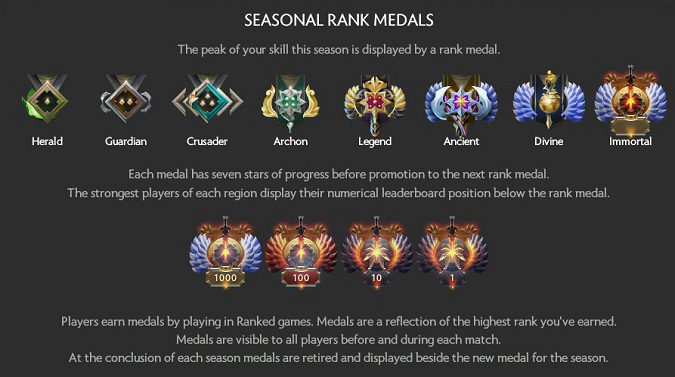 Ratings allow to assess the individual skill of each player and pick the appropriate team and rivals. The player’s rating rises with every match won, and decreases when a player loses a ranked match.
Ratings allow to assess the individual skill of each player and pick the appropriate team and rivals. The player’s rating rises with every match won, and decreases when a player loses a ranked match.
Newcomers are not eligible to take part in ranked matches. They have to go through several unranked game stages before competing with other players in ranked matches.
- You have to play the first 25 games with a limited range of heroes. After that, the system determines how many games are left for you to access ranked matchmaking. On average, all new accounts need to play 100 games, like All pick and Turbo. If you are already a skilled player, the system will see this and most likely 50 games will be enough.
- Since 2017, Valve has introduced a rule according to which ranked games can be played only by users who connected their mobile phone numbers to the account.
- Once preliminary games are through, you are granted access to engage in Matchmaking Rating. To calibrate your rank within the system, there are 10 additional matches to complete. These calibration matches will determine your level of play and the Dota 2 MMR rank. The maximum rating value you can get after the calibration games is 3500 MMR.
The rating system consists of 7 ranks for each of the game modes, solo or team/party games. Each rank has its own 5-star ranking. Players have to reach a 5-star status in each of these ranks in a row to finally receive a Divine rank. This is an elite division in Dota 2, where the top players can show up in the World MMR Leaderboards.
Dota 2 Tips and Tricks
Alongside the commonplace game mechanics mention above, there are plenty of gameplay elements in Dota 2 which are not so obvious to first-timers and casual players. Here are some gaming tips and tricks to help you succeed in this challenging online game:
- Pressing the ALT key during the game helps you see the spots on the map where forest (neutral) creeps are about to spawn, and shows maximum tower attack range and True Sight radius.
- You can finish off creeps using Auto Attack and pressing the “S” key to stop attacking, or, instead, you can use the “A” key or the right mouse button.
- The Ring of Basilius, which can further be upgraded into the Ring of Aquila, not only grants mana regeneration and armor to you and your allies, but also gives some extra armor to allied creeps, making them push the lane much better. The Ring of Basilius is a commonly-purchased item, but oftentimes it is toggled off, since unnecessary pushing the lane makes no sense.
However, in some cases, temporary activation can prevent the enemy from finishing off allied creeps to get some gold. This feature is especially useful for mid heroes in a typical 1v1 situation. More or less experienced players know what it usually takes to kill creeps. Getting their armor increased may be an unexpected twist for an enemy hero. In the meantime, you can deny these creeps or let allied towers or creeps finish them off instead. In this case, your enemy gains only experience and no gold at all.
- After playing through a number of matches, you eventually realize that killing creeps under towers is next to impossible, since damage dealt is too small for last-hitting. In this case, a tricky decrease of your damage can help. Melee heroes usually drop off the Quelling Blade (which grants a damage bonus), hit a creep, then re-equip the Blade and finish off the creep. Ranged heroes can do the same with the Wraith Band or the Null Talisman.
- From the very beginning, every hero has a Town Portal Scroll in their backpack. It may be very helpful, especially on the early stages. If there is no way to retreat, you can teleport to your home base or even to allied Tier 1 tower. Remember that enemy heroes may have the abilities to cancel the cast of the teleport spell while you are channeling it. However, if they just try to stun or root your hero – such tries will have zero effect, and you can freely use the scroll to fly away.
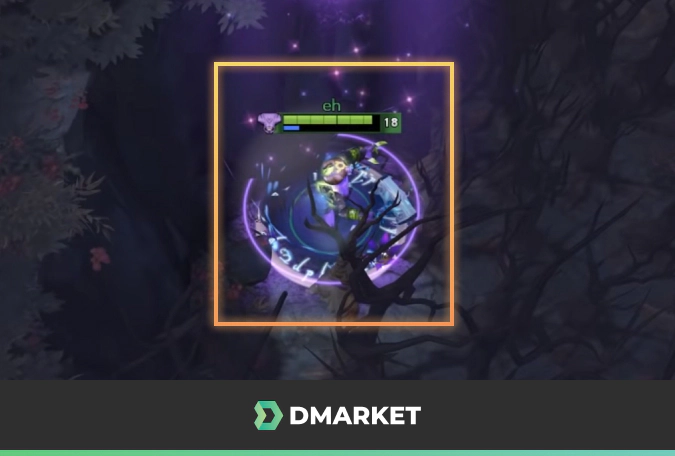
- Invisible means invincible. This saying is popular at any stage of the game, but it is not always true. To fight successfully against players with invisibility effects, you can always buy items that can dispel these effects, for instance, the Dust of Appearance or Sentry Wards.
- The fog of war allows you to hide from your enemies even at a very close distance. Try to move through the forest and leverage the landscape of the map in order to catch the enemy by surprise or retreat. Running straight along the line is not the best way to retreat or attack.
-
Keeping an eye on the minimap to see what your allies are doing is more than an essential tactic that can save your own life. Have a look at the minimap two or three times a minute to get the general picture of what’s going on in the game.
-
Getting Bounty runes every 5 minutes should be your rule of thumb. A team that lets many bounty runes slip by loses a lot of gold.
-
Death in the game is not always a bad thing. In a situation when getting killed is inevitable, the first thing to do is to make purchases in order not to lose gold. For doing so, set up some Quick Buy hotkeys so that you can purchase some desirable items on the fly. Also, you can be killed by neutral creeps. If you get caught somewhere near a neutral creep’s spawning spot or Roshan’s lair, you can aggro them so that enemy heroes will waste much time and get nothing out of your gold.
-
Any hero can be used for different positions. To know what items you need to collect for a particular position, just go to the sidebar menu on the top left. Here you can always use your hero’s in-game guide to see various Dota 2 builds and ways how to level up your abilities and talents. Besides, here is some info on the build’s relevance with the latest patch and the number of users’ recommendations.
-
All you need to activate an item is to double-click it. For instance, once you double-click the Blink Dagger, it teleports your hero to the maximum possible distance toward your base.
-
One of the best ways to aggro enemy creeps is to initiate a fight with any of the enemy heroes, even if this hero is pretty far from you, in another part of the map. Once you start attacking him, the enemy creeps rush after you immediately.
-
To efficiently use the Shrine’s bonuses of health and mana regeneration, you should put away all your items with health and mana boosts into inactive backpack slots. For the next 6 seconds you get much more regen benefits than if the items were active.
-
Enjoy the game and try to give positive emotions to both your allies and enemies.
We’ve tried to collect as much useful information as we can in this Dota 2 guide and hope it helps you in the fascinating world of the exciting game.
If you are the same fans of the game as we are, then you should definitely add to your collection these awesome images Dota 2.
If you prefer other games, than we also have something for you. Check out out Rust guide for beginners and improve your gaming skills!
Follow DMarket on Facebook and Twitter to get all the significant news on CS:GO Esports.











